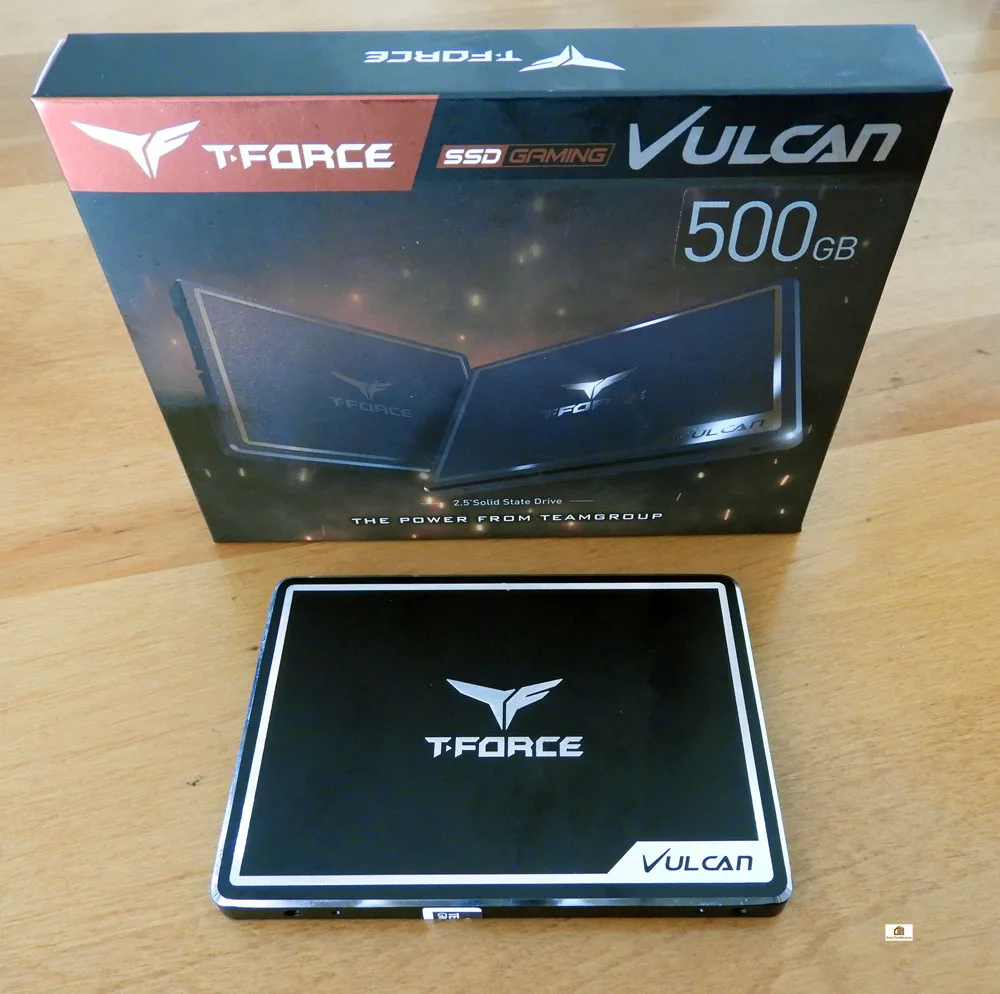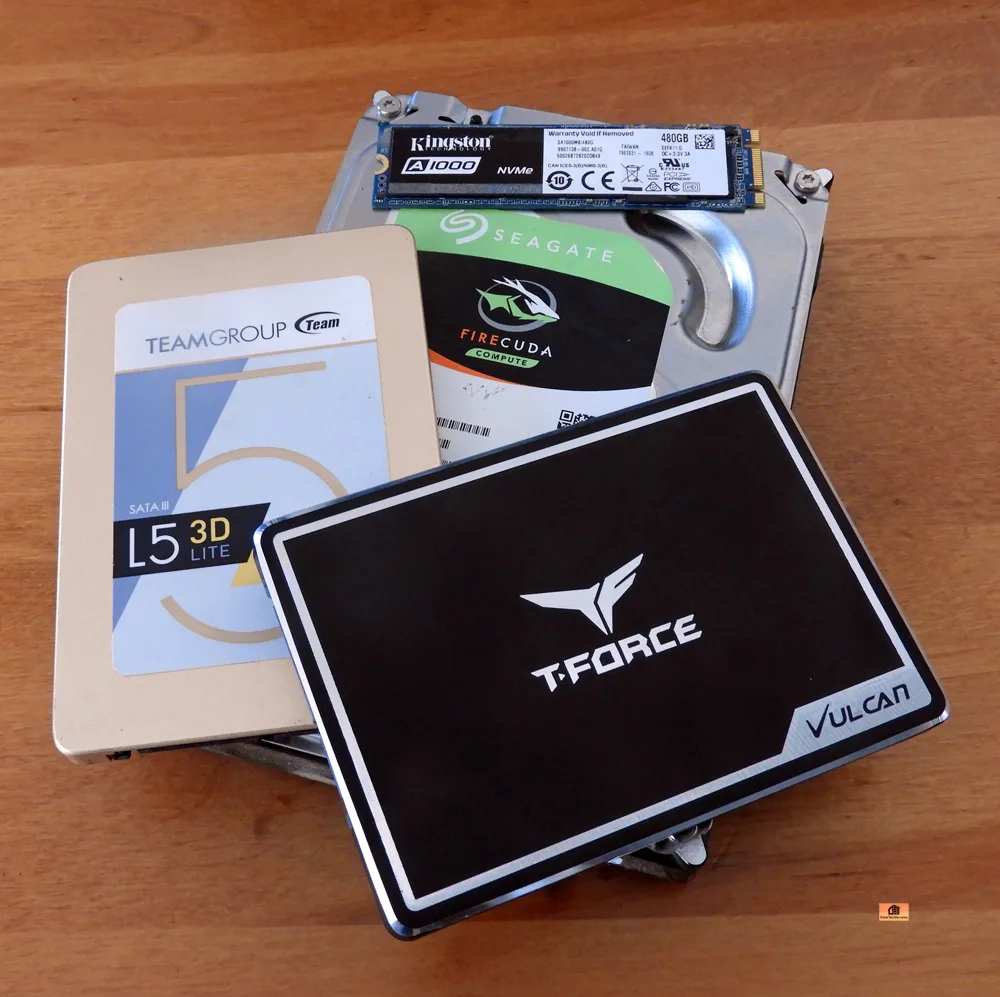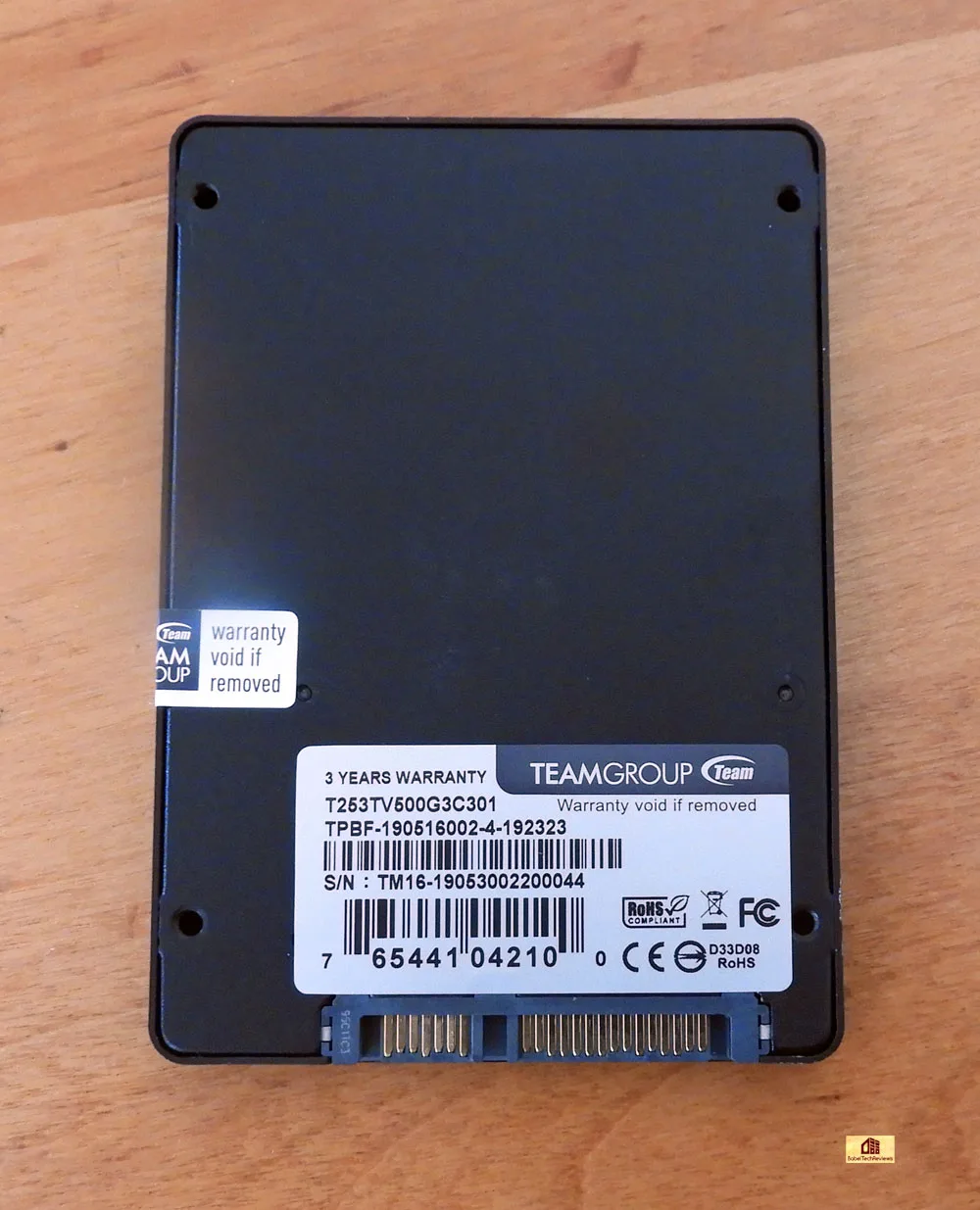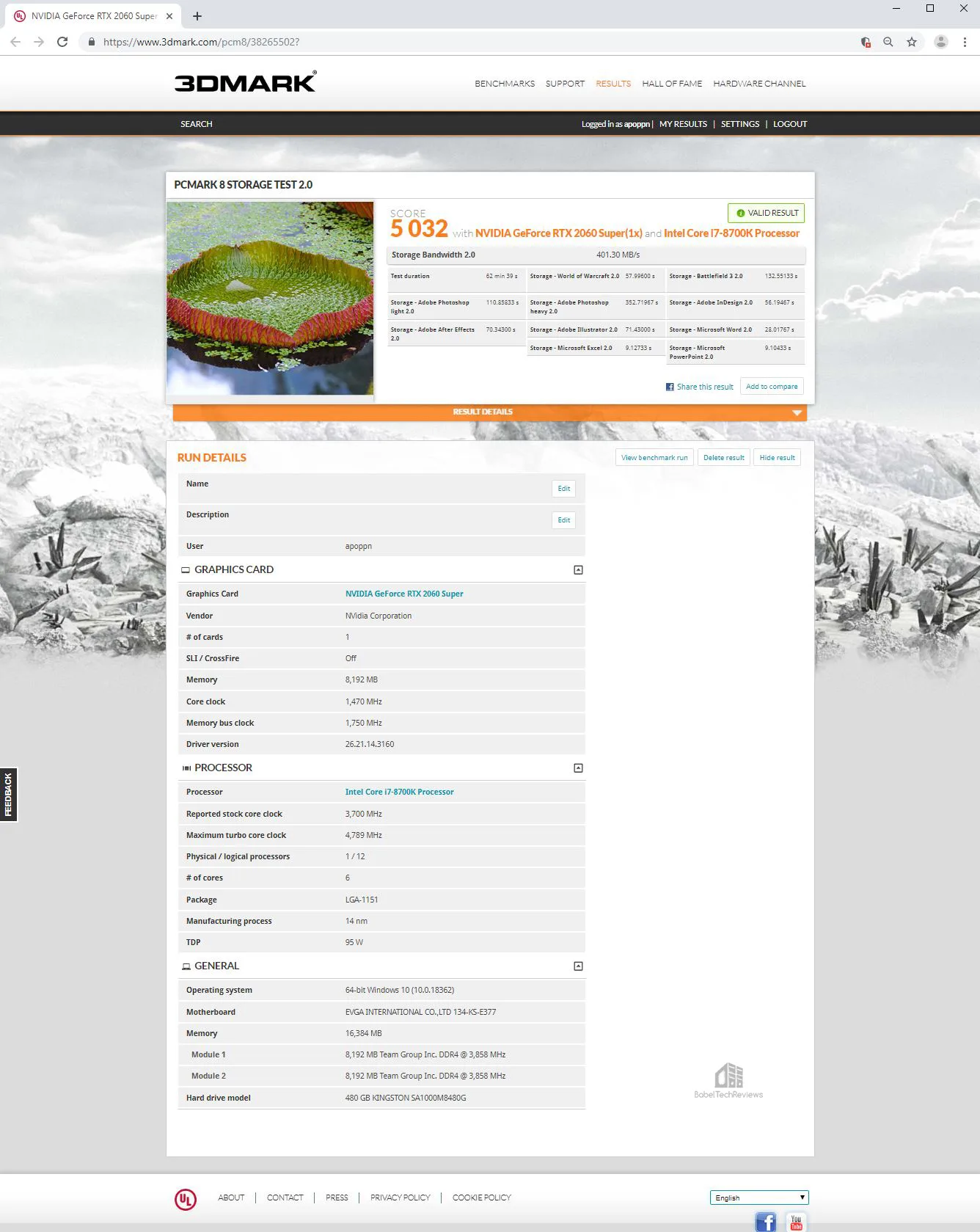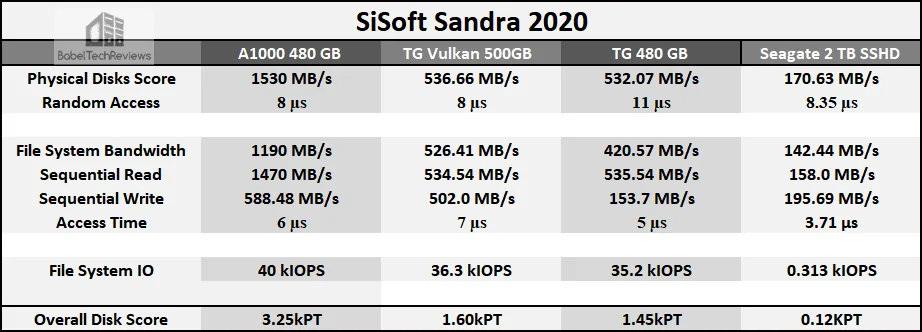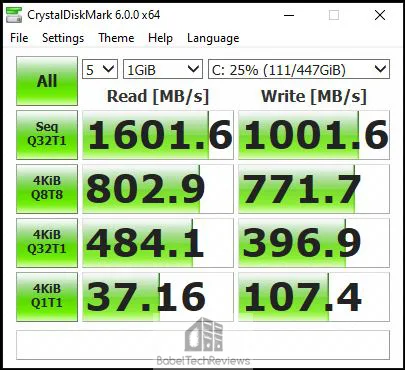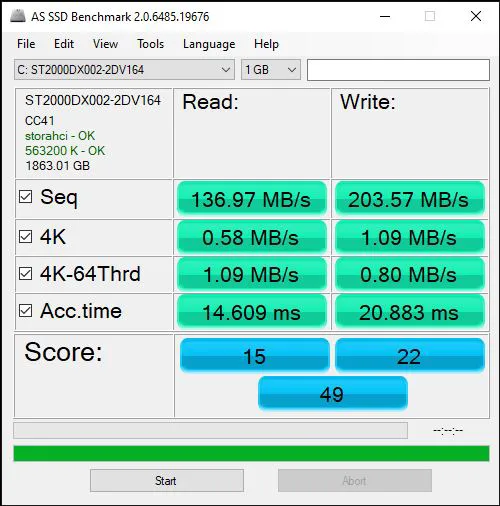The Team Group T-FORCE Vulcan 500GB SSD review – SATA SSD vs. SSHD vs. PCIe NVMe
Solid State Drives (SSD) save game and level loading times for gamers and give many apps a noticeable performance boost over using Hard Disk Drives (HDD). SSD pricing continues to soften, and last month Team Group sent us their T-FORCE 500GB Vulcan SATA SSD for evaluation.
BTR uses two identical 480GB Team Group L5 LTE SSDs as boot drives – one for AMD and one for NVIDIA – together with a 1.92 TB SanDisk SSD and a 2 TB Micron 1100 SSD for our primary game storage. In addition, we use a 2 TB Seagate FireCuda Solid State Hard Drive (SSHD) for additional storage.
For this review, we are going to compare the performance of three drives to the T-FORCE Vulcan 500GB SSD ($59.99): the Kingston A1000 480GB NVMe SSD ($76.30), the 480GB Team Group L5 SSD ($58.99), and a 2 TB FireCuda SSHD ($89.79) which is a 7200 rpm Seagate HDD coupled with 8 GB of flash drive.
BTR’s test setup uses Windows 10 64-bit, featuring an Intel Core i7-8700K overclocked to 4.8GHz for all cores as set in the EVGA Z370 FTW motherboard’s BIOS, and 16 GB of T-FORCE XTREEM DDR4 at 3866MHz. The settings and hardware are identical except for the four drives being tested, and the graphics are powered by a RTX 2060 SUPER Founders Edition (FE). We benchmark with all of our drives at less than 80% capacity, and in addition, all of the drives have been in use for months except for the Vulcan SSD which has been “dirtied” using IOmeter, so our testing tends to give more real world performance results.
Here are the features and specifications of the T-FORCE Vulcan 500GB SSD from Team Group’s website.
Vulcan SSD Features and Specifications :
- 3D NAND technology-the capacity has been expanded more than ever, which is capable of storing more games and data.
- High speed transfer: the excellent experience in terms of booting, data adding, and gaming reaction requirement bring all incredible read write speed.
- Extremely lightweight and thin. 2.5-inch drive with 7mm in height
- Support S.M.A.R.T. technology – monitoring hard drive status efficiently.
- Support TRIM – bring out its best performance on the compatible operating system.
- Product warranty – three years product warranty with free technical support service
All of the details can be found on the Team Group website. Important key highlights are that the Vulcan SSD is fast, durable, lightweight, uses very little power, and it is backed by Team Group’s 3-year warranty. Here are the specifications for those who prefer to read them on a compact chart.
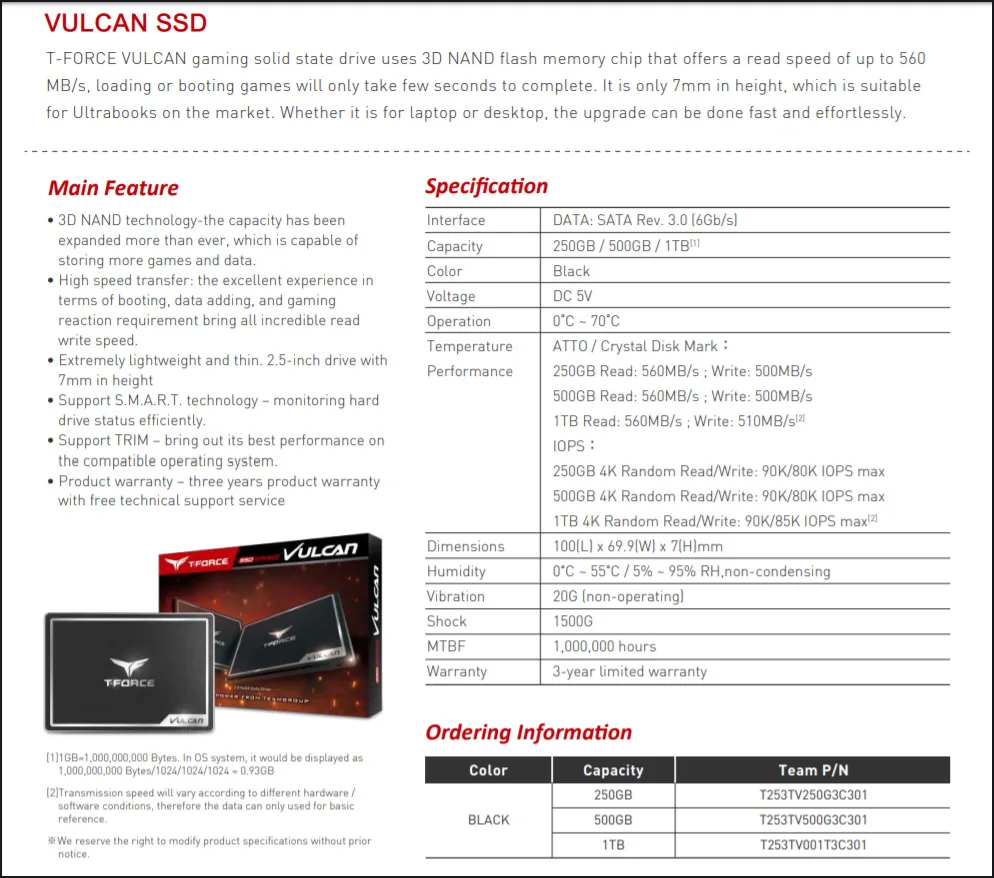
The specifications look good for a SATA SSD. Let’s take a closer look by unboxing the T-FORCE Vulcan 500GB SSD next.
Unboxing
The T-FORCE Vulcan 500GB SSD comes in a small box.
The other side of the box gives the specification and explains what T-FORCE stands for.
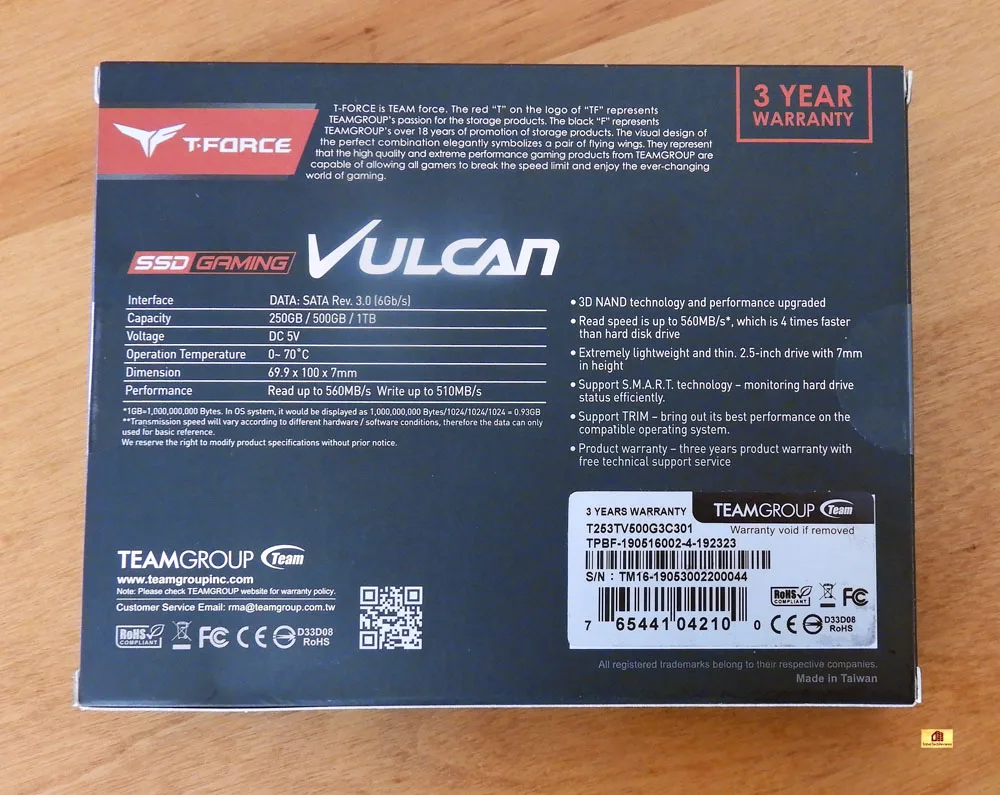 Opening the pack included in its protective plastic shell are the Vulcan SSD, a warranty/installation instructions flyer, and a Team Group badge.
Opening the pack included in its protective plastic shell are the Vulcan SSD, a warranty/installation instructions flyer, and a Team Group badge.
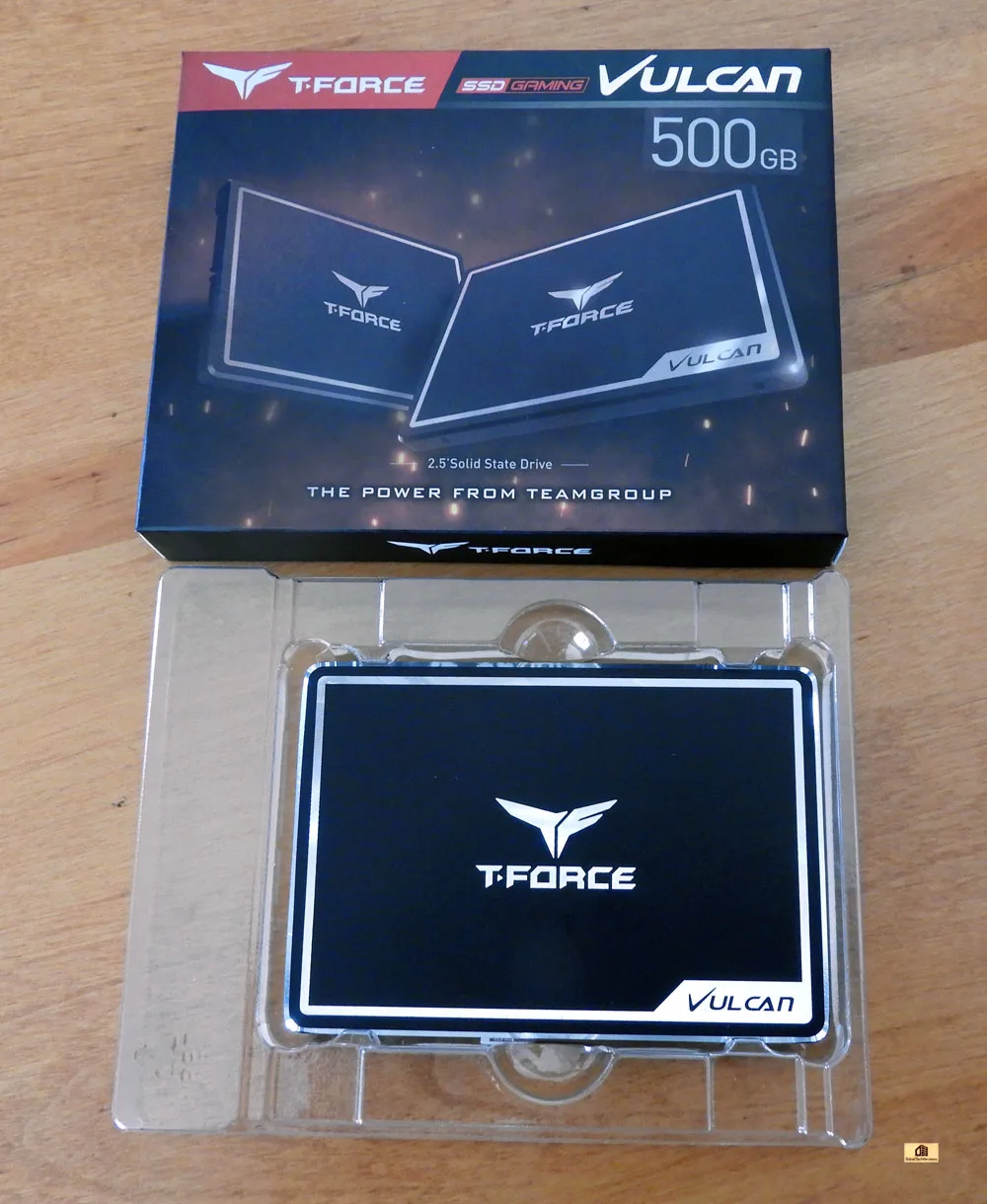
Here is a closer look at the SSD.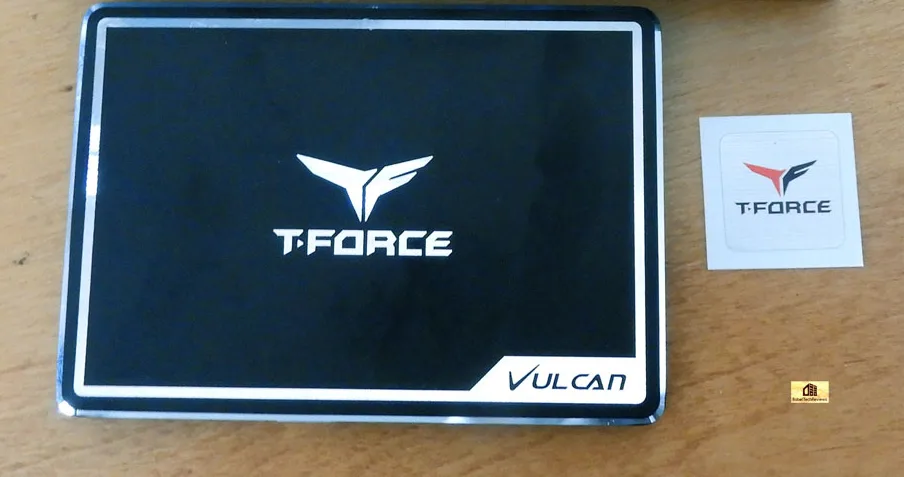
Here are the connections. The drive is quite thin at 7mm which makes it suitable for installation inside notebooks as well as for desktops.
After installing the SSD, the user may need to go into the motherboard’s BIOS “Onboard Device Configuration” to enable it.
Lets look at our test configuration next.
Test Configuration – Hardware
- Intel Core i7-8700K (HyperThreading and Turbo boost is locked on to 4.8 GHz for all six cores. Coffee Lake DX11 CPU graphics.
- EVGA Z370 FTW motherboard (Intel Z370 chipset, latest BIOS, PCIe 3.0/3.1 specification, CrossFire/SLI 8x+8x), supplied by EVGA
- T-FORCE XTREEM 16GB DDR4 (2x8GB, dual channel at 3866MHz), supplied by Team Group
- RTX 2060 SUPER Founders Edition 8GB, stock clocks, on loan fro NVIDIA
- T-FORCE Vulcan 500GB SSD Supplied by Team Group
- Kingston A1000 480 GB NVMe PCIe SSD, supplied by Kingston
- Team Group L5 LITE 3D 2.5″ 480 GB SSD
- 2TB Seagate 7200 rpm SSHD (Solid State Hard Drive)
- Seasonic 850W Gold Focus power supply unit
- EVGA CLC 280mm CPU water cooler, supplied by EVGA
- EVGA Nu Audio stereo PCIe sound card, supplied by EVGA
- Edifier R1280T active desktop speakers
- Grado SR60e headphones
- Monoprice Crystal Pro 4K
Test Configuration – Software
- Nvidia’s GeForce 431.60 WHQL drivers were used. High Quality, prefer maximum performance, single display.
- VSync is off in the control panel.
- AA enabled as noted in games; all in-game settings are specified with 16xAF always applied.
- All results show loading time in seconds.
- Highest quality sound (stereo) used in all games.
- Windows 10 64-bit Home edition.
- Latest DirectX
- All games are patched to their latest versions at time of publication.
- MSI’s Afterburner, latest version.
- IOmeter
- HD Tach
- HD Tune
- AS SSD
- ATTO
- Crystal DiskMark
PC Game & Level Loading Suite
- Fallout 4
- Grand Theft Auto V
- Project CARS 2
- Kingdom Come: Deliverance
- World of Warcraft (PC Mark 8)
- Battlefield 3 (PC Mark 8)
Synthetic Benching Suites
- SiSoft Sandra 2020
- AIDA64
- PC Mark 10
- PC Mark 8
Nvidia Control Panel settings:
We used MSI’s Afterburner to set the power and temp limits to their maximums.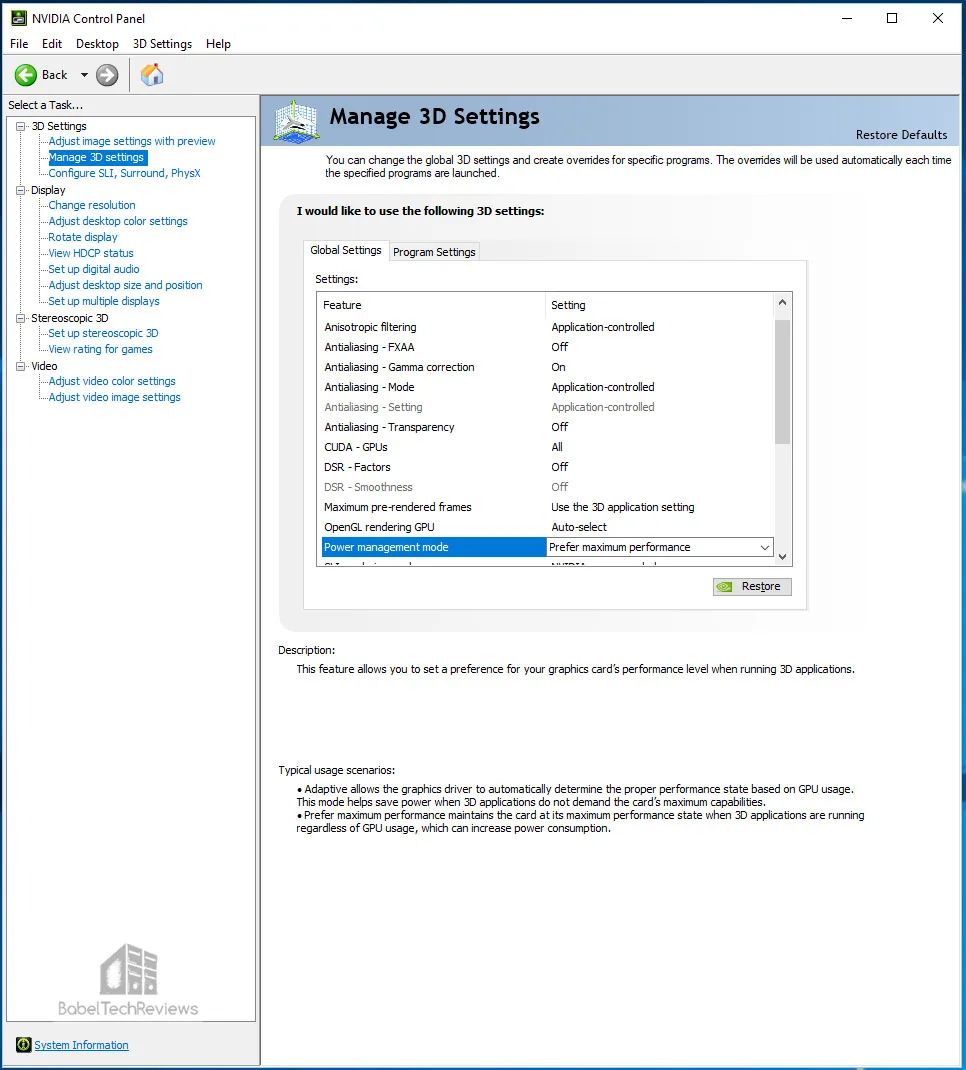
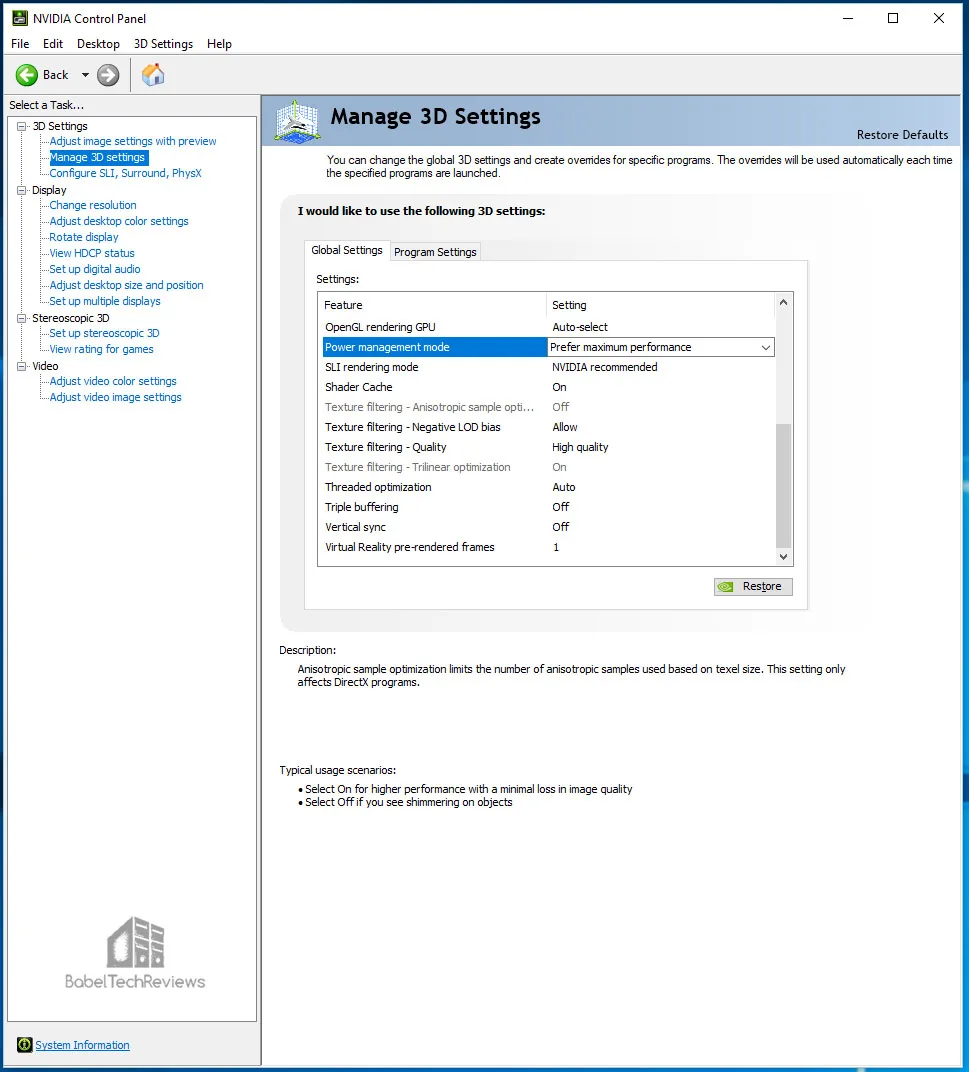
Let’s head to our benching results.
Benchmarking the T-FORCE Vulcan 500GB SSD
Benchmarking SSDs is not an exact science as there is some variability between runs and different benchmarks may show different results depend on how they run their tests and how up-to-date the benchmark is. However, using enough real world and synthetic tests, it may be possible to get a good idea of relative performance across all four of our tested drives.
First, we will will look at synthetic benchmark suites to highlight the differences between our drives.
PCMark10
UL (formerly Futuremark) is well-respected as a developer and publisher of PC benchmark applications for nearly two decades. Although PCMark benches are synthetic tests, they provide a good measure of system performance. PCMark 10 is UL’s seventh major update to the PCMark series. PCMark 10 was primarily developed for Windows 10 and it builds upon the PCMark 8 platform for a complete package of vendor-neutral and easy-to-use benchmarks for home or office environments.
Unfortunately, in comparison to PCMark 8, PCMark 10 is missing key elements including detailed storage testing, and it is not possible to test attached drives as with the earlier suite. We hope that UL updates 10 as they promised long ago. We benchmark using the Extended settings.
The system with the T-FORCE Vulcan 500GB SSD scores 8880.
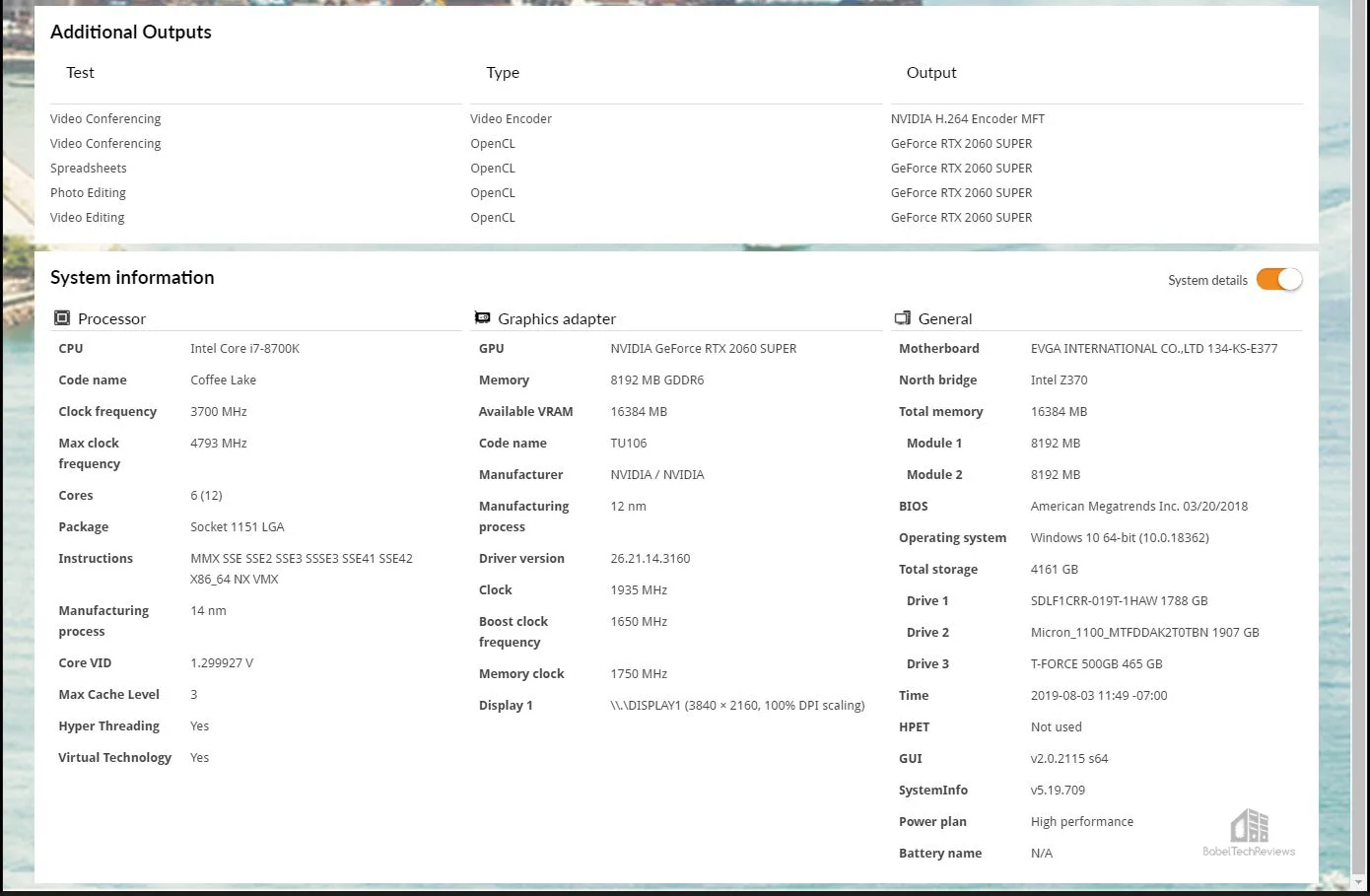
Here are the Vulcan 500GB SSD online results:
The same system with the Team Group 480 GB SSD scores 8831.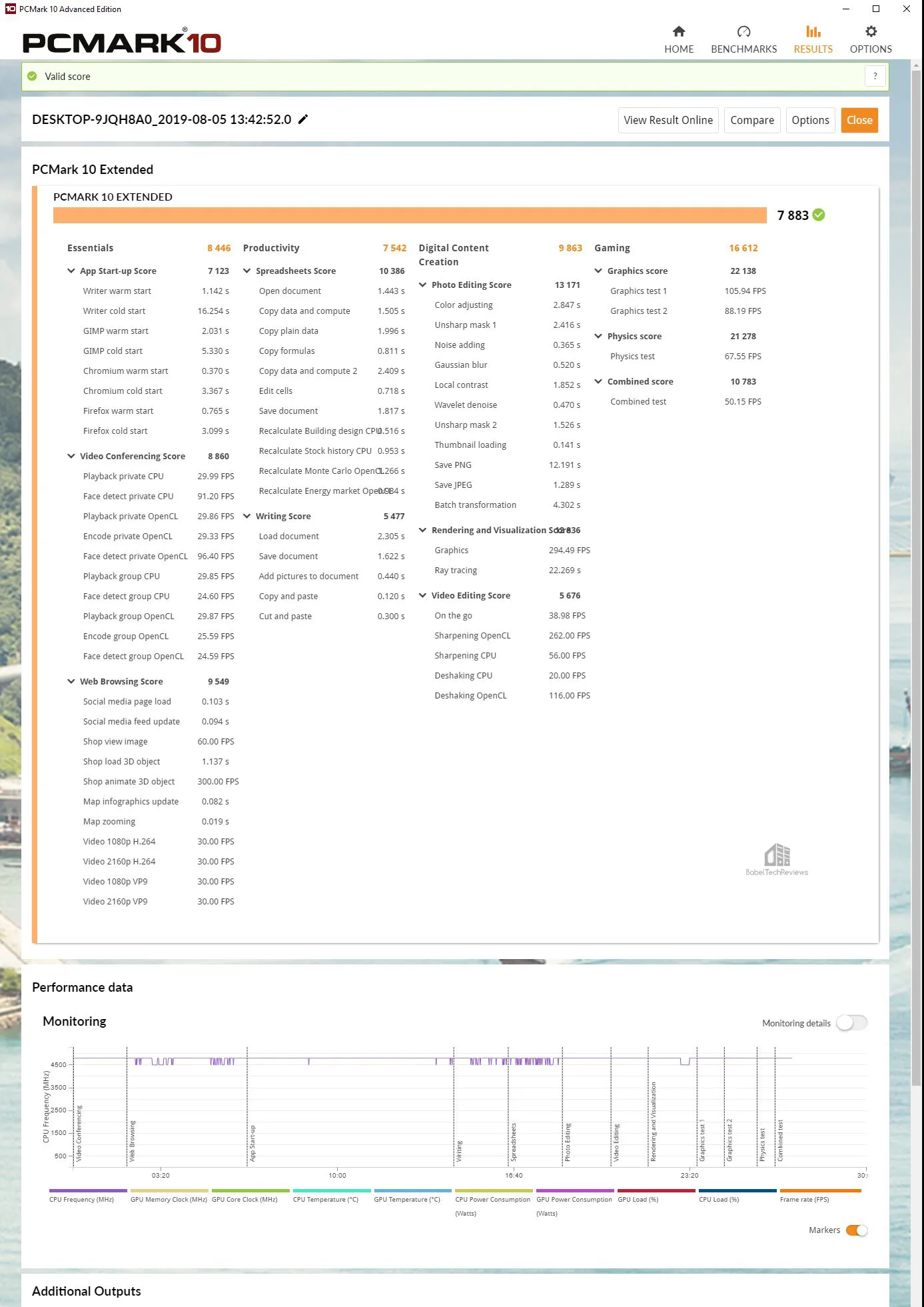
 Here is the same test with the Team Group 480GB SSD validated online.
Here is the same test with the Team Group 480GB SSD validated online.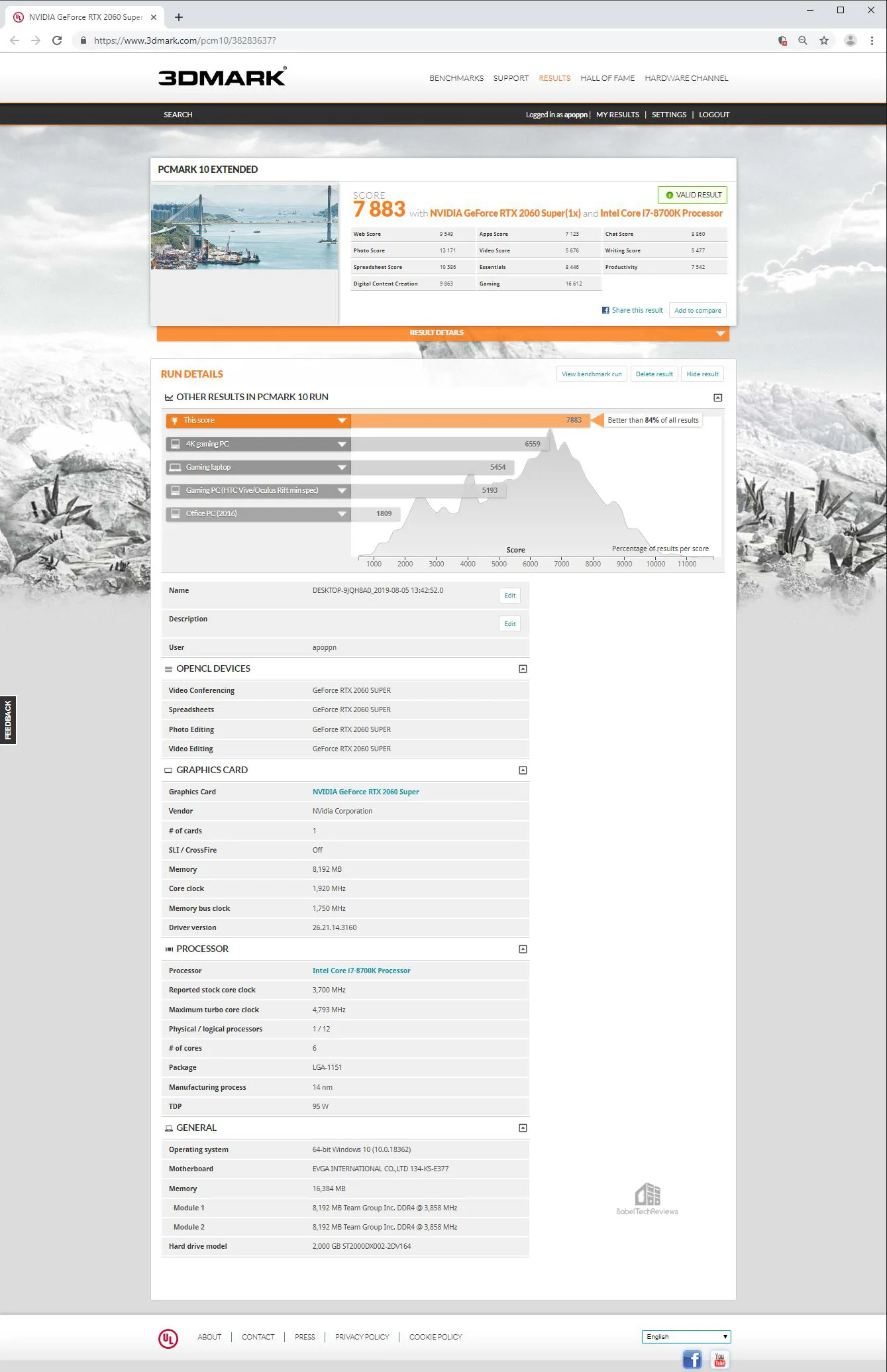
The same PC with the Kingston A1000 480 GB SSD scores 8863 which is ahead of the 480GB Team Group PC score, but it is a bit behind the T-FORCE Vulcan 500GB SSD results.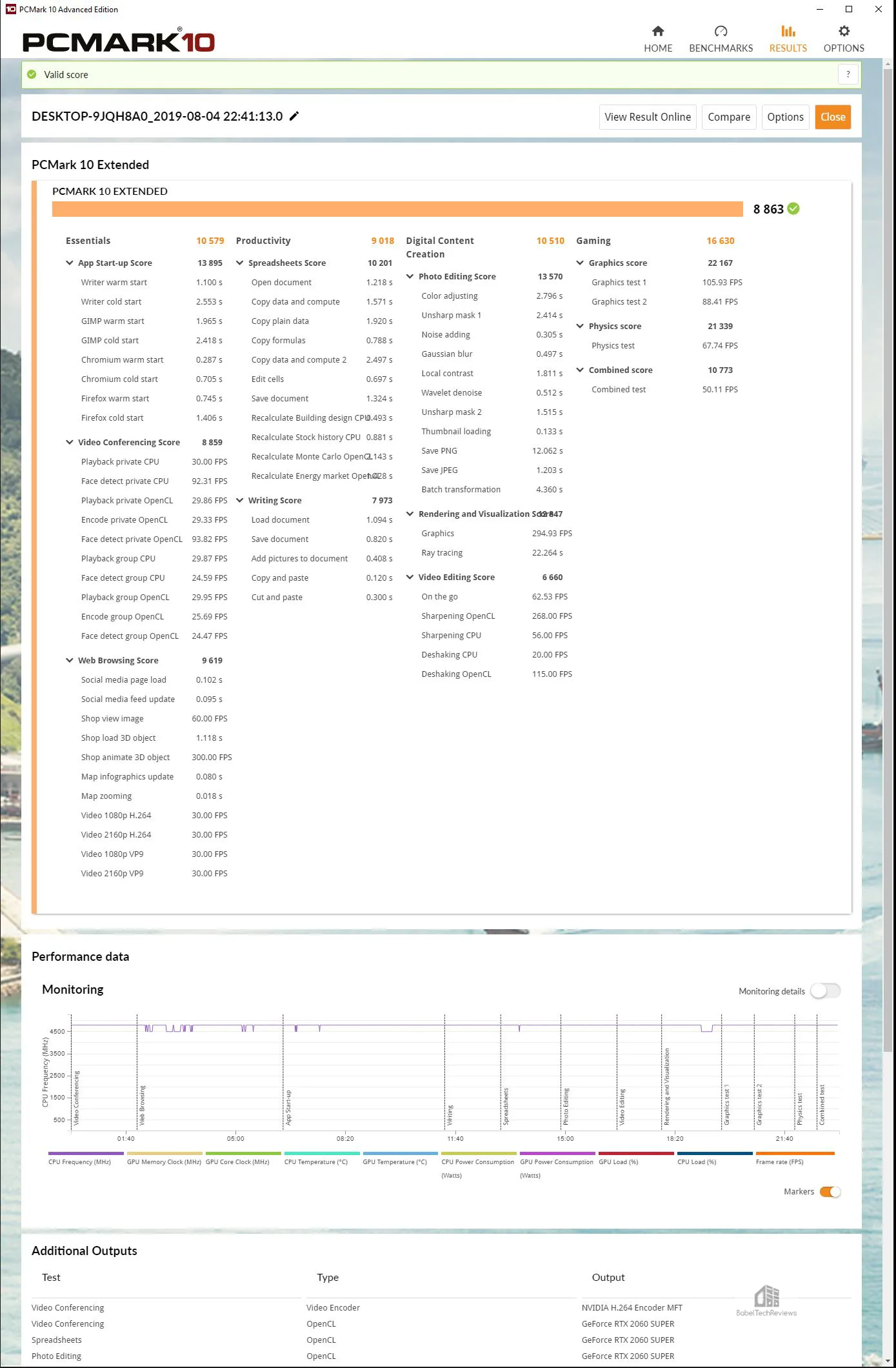
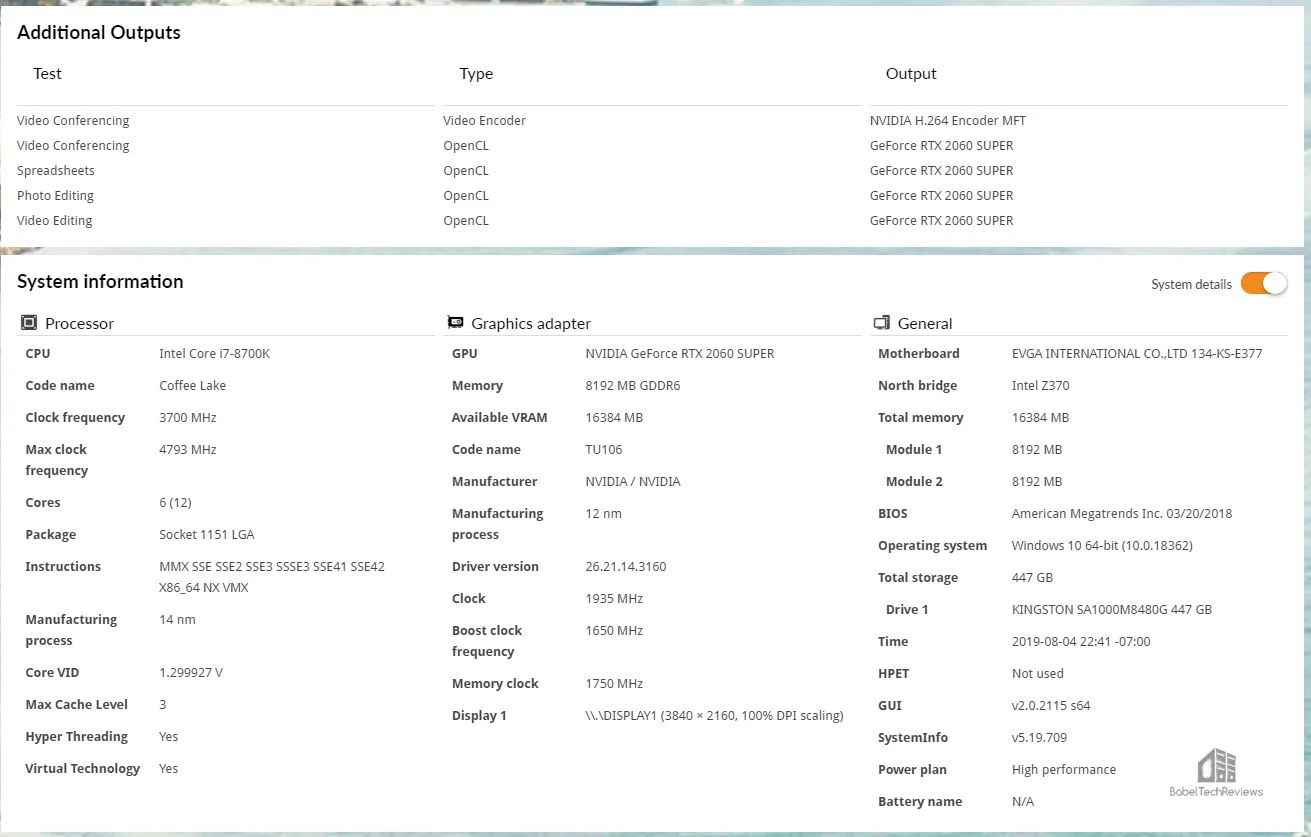 Here are the online results using the Kingston A1000:
Here are the online results using the Kingston A1000:
The FireCuda 2TB SSHD scores 7883.
 Here is the SSHD’s online score.
Here is the SSHD’s online score. Here is the summary.
Here is the summary.
The T-FORCE Vulcan 500GB SSD PC gets the highest score, but it is very difficult to see exactly where it scored higher by looking at the individual tests. Next up is a much better storage test with PC Mark 8.
PCMARK 8
PCMark 8 has an excellent storage test which actually uses real world timed benchmarks that include loading World of Warcraft and Battlefield 3 as well as timing how long it takes to load popular Adobe and Microsoft apps.
The T-FORCE Vulcan 500GB SSD scores 4985 with a total Storage 2.0 Bandwidth of 295.60 MB/s. And most importantly for a gamer, it took 58.2 seconds to load World of Warcraft and 133.2 seconds for Battlefield 3 to load.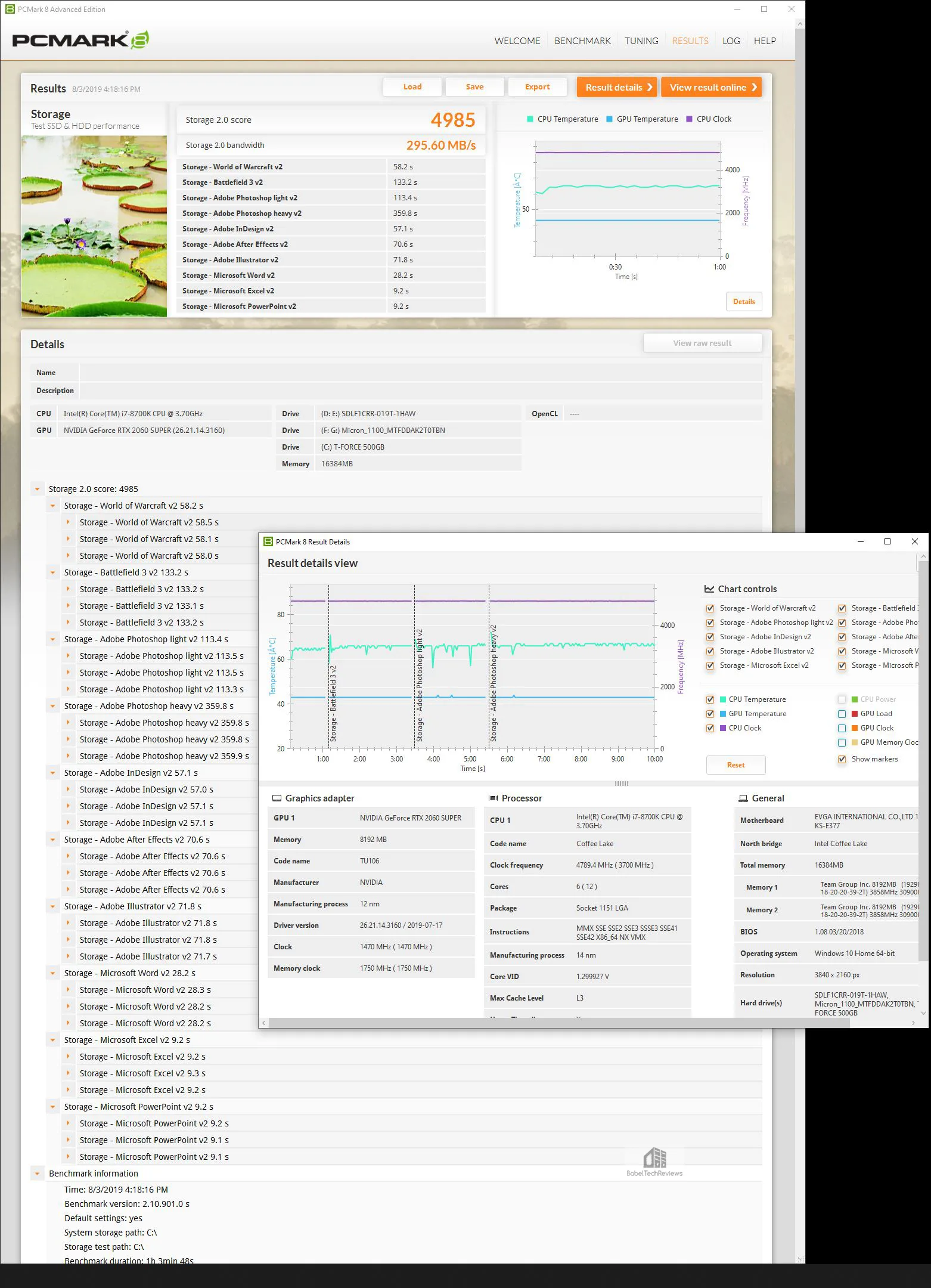
Here are the online Vulcan 500GB SSD results: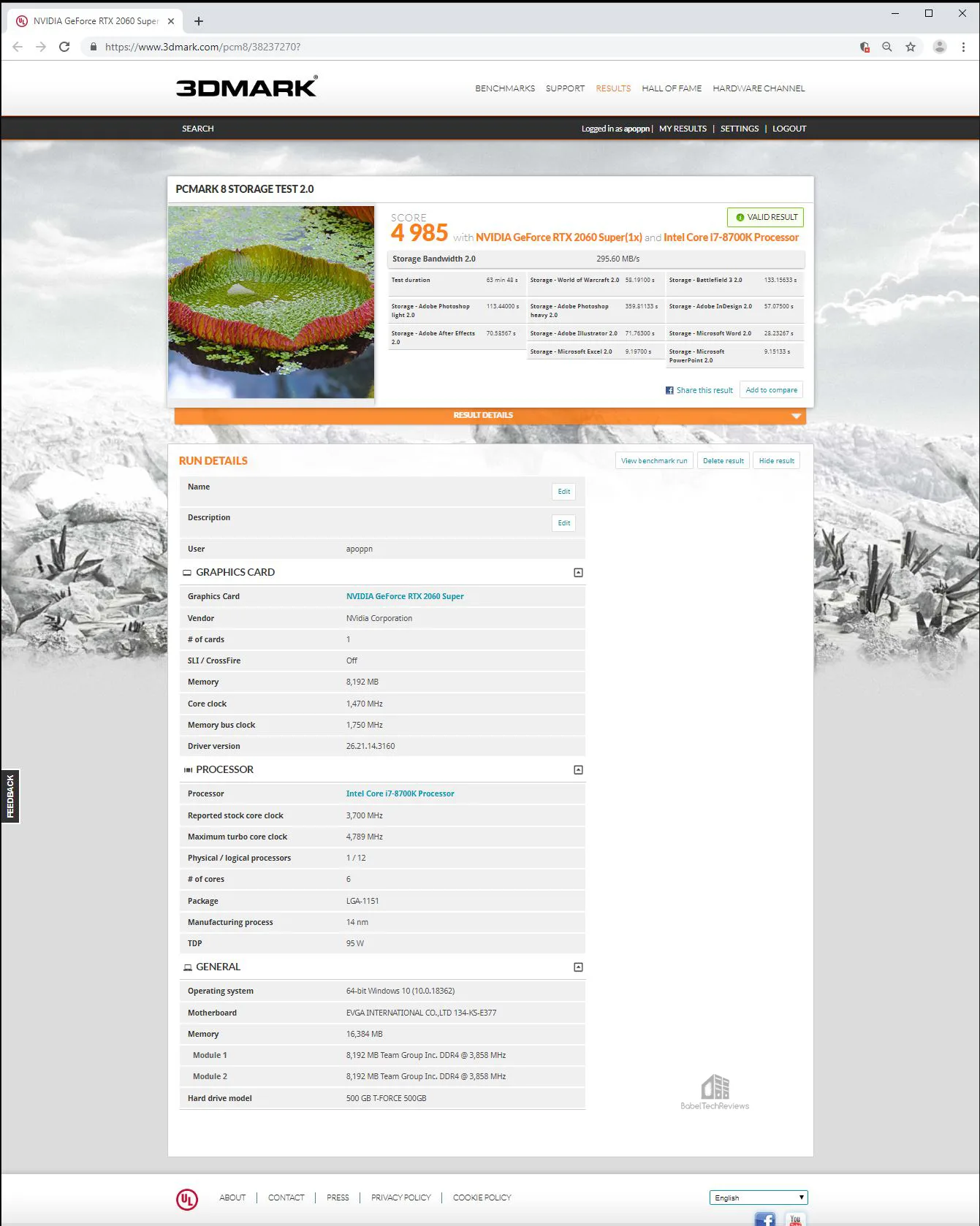
The Team Group L5 480 GB SSD scores 4959 with a total Storage 2.0 Bandwidth of 253.36 MB/s. Most importantly for a gamer, it took 58.6 seconds to load World of Warcraft and 133.8 seconds for Battlefield 3 to load.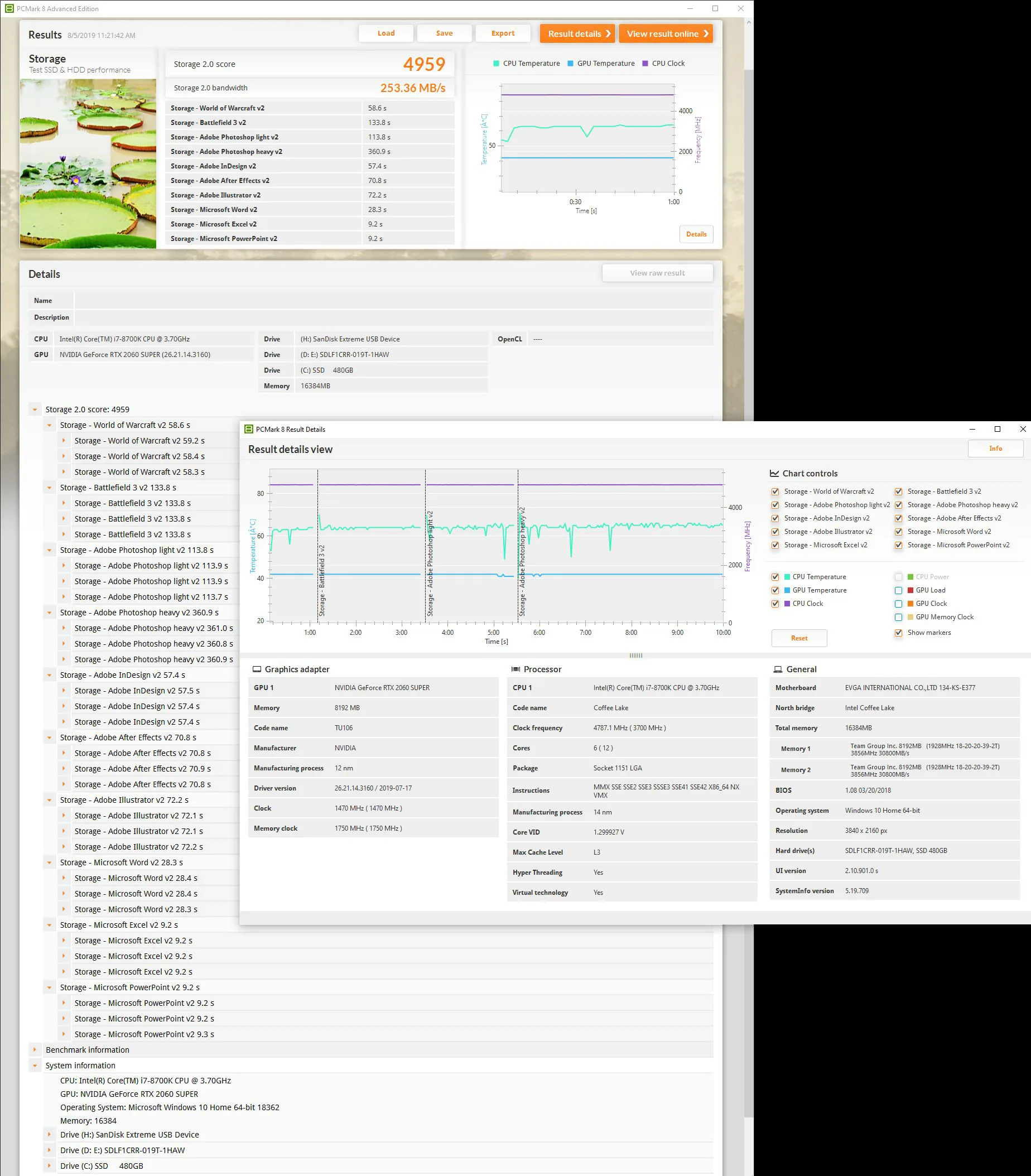
Here are the 2 TB SSHD storage test results scoring 3267 and 21.73 MB/s bandwidth and most importantly for a gamer, it took 97.1 seconds to load World of Warcraft and 250.3 seconds for Battlefield 3 to load.
Here are the SSHD’s online results. Here is the PCMark 8 comparative loading times chart for World of Warcraft and for Battlefield 3 which is also included in the summary Game/Level Loading chart.
Here is the PCMark 8 comparative loading times chart for World of Warcraft and for Battlefield 3 which is also included in the summary Game/Level Loading chart.
Here are the comparative overall PCMark 8 scores including storage bandwidth results.
The Kingston PCIe A1000 M.2 480GB SSD is the fastest drive overall, however, there isn’t a lot of practical difference between its results and the SATA SSDs. In contrast to using any SSD, using the SSHD takes nearly twice as long to load the tested two games. A SSHD only takes advantage of repeated loading of levels or games and after 2 or 3 loads, and then it will set up more quickly, approaching SSD speeds.
SiSoft Sandra 20/20
Before we get to gaming, we want to see exactly where drive performance results differ, and there is no better tool than SiSoft’s Sandra 2020. SiSoftware Sandra (the System ANalyser, Diagnostic and Reporting Assistant) is an complete information & diagnostic utility in one complete package. It is able to provide all the information about your hardware, software and other devices for diagnosis and for benchmarking. In addition, Sandra is derived from a Greek name that implies “defender” or “helper” – PC’s Wonder Woman of benchmarking.
There are several versions of Sandra 2020, including a free version of Sandra Lite that anyone can download and use. It is highly recommended! SiSoft’s Sandra 2020 is the very latest version, and we are using the full engineer suite courtesy of SiSoft, with quite a few improvements over earlier versions of Sandra. It will benchmark and analyze all of the important PC subsystems and even rank your PC as well as make recommendations for improvements.
Here are the Sandra disk benchmarking tests in a single chart summarizing the performance results of our four drives
The Kingston A1000 480 GB NVMe SSD overall performance is faster than the other two SATA III SSDs although the Vulcan SSD comes in second. The SSHD is a distant last.
AIDA64 v6.0
AIDA64 is the successor to Everest and it is an important industry tool for benchmarkers. AIDA64’s benchmark code methods are written in Assembly language, and they are extremely optimized for every popular AMD, Intel and VIA processor core variants by utilizing the appropriate instruction set extensions. We use the Engineer’s version of AIDA64 courtesy of FinalWire. AIDA64 is free to to try and use for 30 days.
We run the AIDA64 Disk Benchmark and the 4 individual READ tests for each drive, and we include the image for each test and then summarize them in a chart. These tests are incredibly detailed and there are a lot of customization options available so we run the default tests. We did not run the Read tests as they destroy all of the data on the disks being tested.
- The Linear Read test measure the sequential performance by reading or writing all sectors without skipping any. It’s a linear view of the drives overall performance from its beginning to end.
- The Random Read test measures the random performance by reading variable-sized data blocks at random locations on the surface of the drive and they are combination of both speed and access times as its position changes before each new operation.
- The Access time tests are designed to measure the data access performance by reading 0.5 KB data blocks at random drive locations.
- The Buffered Read test will measure the drive caching.
The overall disk benchmark is relatively quick, but the individual benchmarks take much longer to chart the drive’s performance.
Here is the T-FORCE Vulcan 500GB SSD disk benchmark followed by the 4 images of AIDA64’s individualized tests.
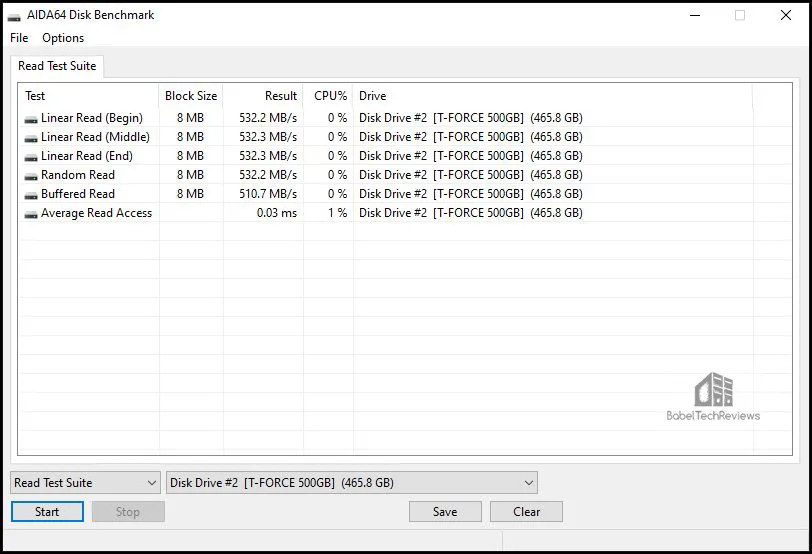

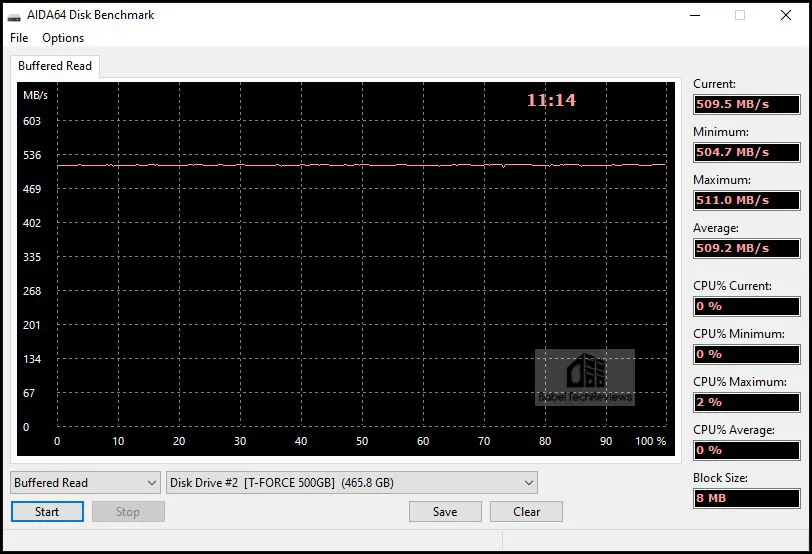
 Here are the Team Group 480GB L5 SSD‘s overall disk benchmark results followed by 4 images of AIDA64’s individualized Read tests.
Here are the Team Group 480GB L5 SSD‘s overall disk benchmark results followed by 4 images of AIDA64’s individualized Read tests.
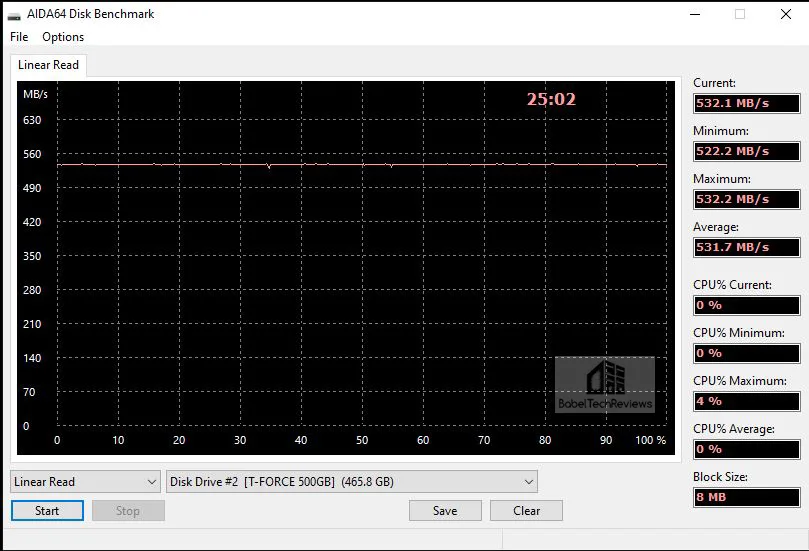

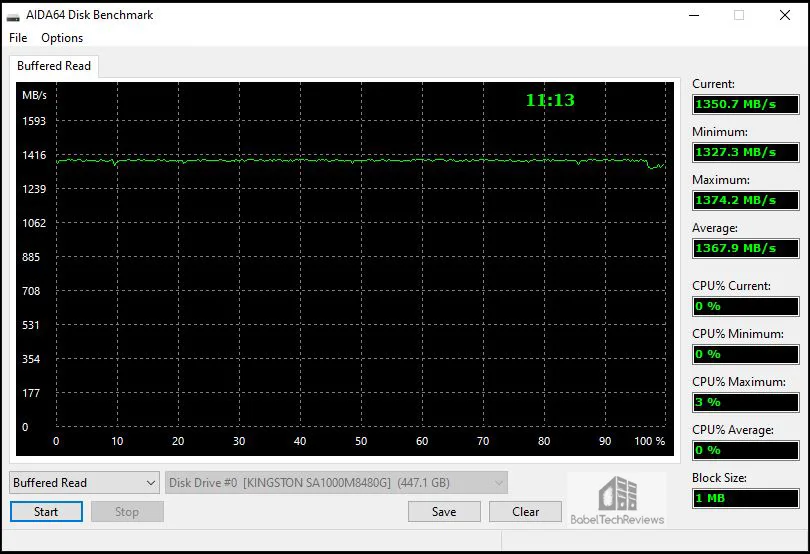

The Kingston A1000 480GB SSD overall and then the four images of AIDA64’s individualized Read tests are next.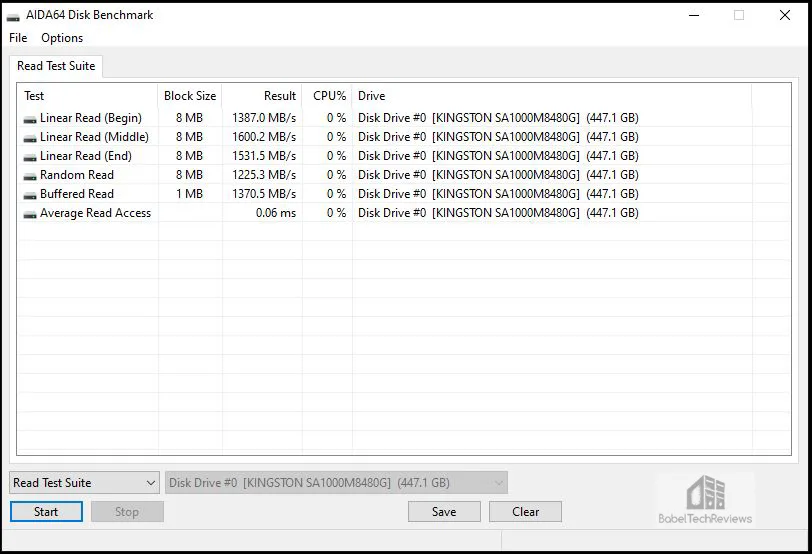



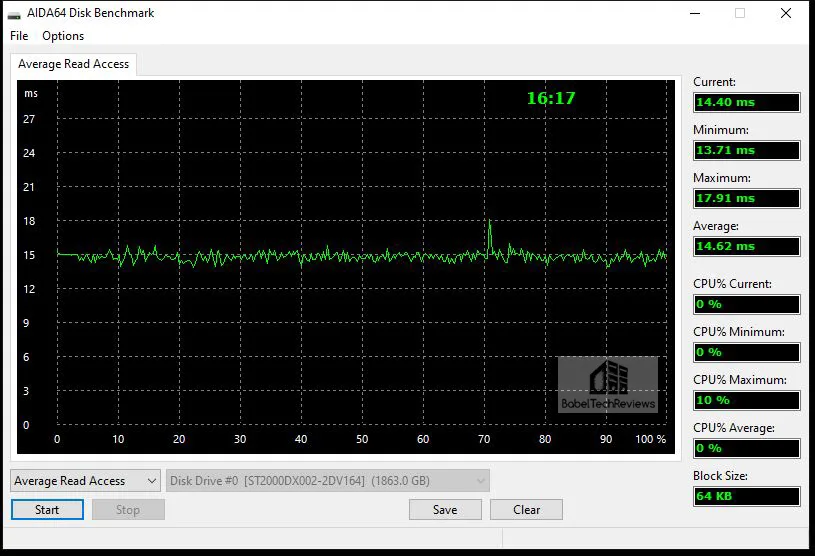 The FireCuda 2 TB SSHD’s four images of AIDA64’s individualized Read tests follow the overall results. These tests took many hours to complete.
The FireCuda 2 TB SSHD’s four images of AIDA64’s individualized Read tests follow the overall results. These tests took many hours to complete.
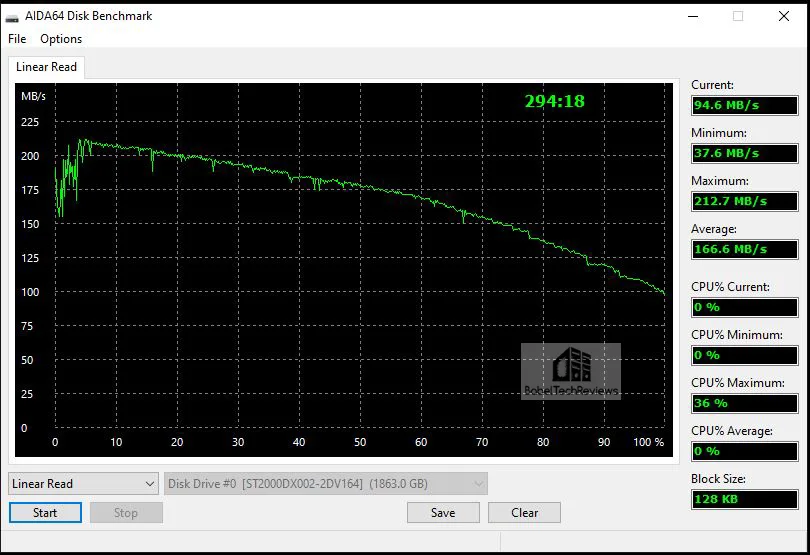

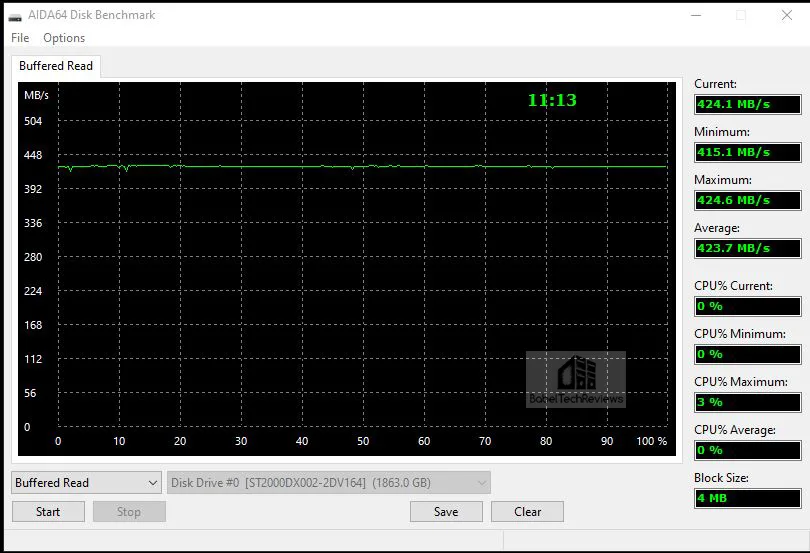
 Here are the AIDA64 Disk benches summarized in a chart.
Here are the AIDA64 Disk benches summarized in a chart.
Again the Kingston A1000 480GB NVMe SSD is ahead of the other SATA-based SSDs which are in turn much faster than the SSHD. The Vulcan Drive is the second fastest of our four tested drives.
CrystalDiskMark 6.0.2
CrystalDiskMark is a HDD benchmark utility for your hard drive that enables you to measure sequential and random read/write speeds. Here are some key features of “CrystalDiskMark”:
- Measure sequential reads/writes speed
- Measure random 512KB, 4KB, 4KB (Queue Depth=32) reads/writes speed
Here is the T-FORCE Vulcan 500GB SSD CrystalDiskMark results.
Here are the Team Group 480GB L5 SSD‘s CrystalDiskMark results.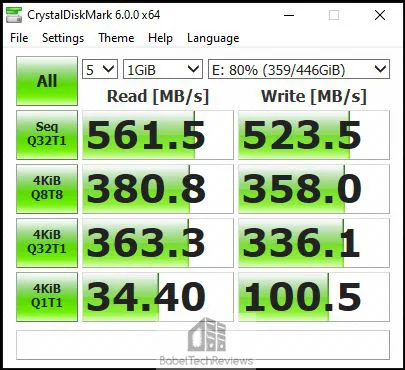
The Kingston A1000 480GB SSD CrystalDiskMark tests results follow.
The FireCuda 2 TB SSHD‘s CrystalDiskMark results are up last.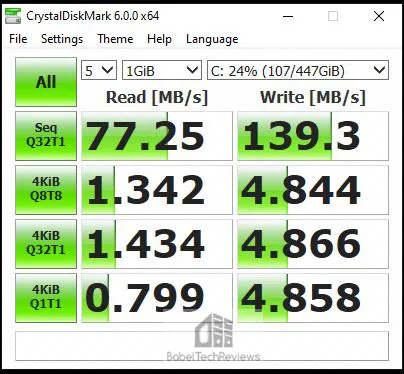
As expected, the PCIe M.2 Kingston A1000 SSD scores highest followed by the T-FORCE Vulcan 500GB SSD, then the Team Group L5 LTE 480GB SSD, and in distant last place, the FireCuda 2TB SSHD.
Let’s look at our next synthetic test, HD Tune. This free standalone synthetic test we use is old and it doesn’t represent real world performance but it does test some important drive metrics and it is still used today. There is also a pay-for HD Tune Pro which is up-to-date and offers more functionality.
HD Tune
HD Tune is a hard disk utility which has the following functions and it measures the performance of:
- Transfer Rate
- Access Time
- CPU Usage
- Burst Rate
- Random Access test
- Write benchmark
Hard Disk information includes partition information, supported features, firmware version, serial number, disk capacity, buffer size, transfer mode.
- Hard Disk Health
- S.M.A.R.T. Information (Self-Monitoring Analysis and Reporting Technology)
- Power On Time
- Error scan
- Temperature display
Here is the T-FORCE Vulcan 500GB SSD HD Tune benchmark.
Here are the Team Group 480GB L5 SSD‘s HD Tune benchmark results.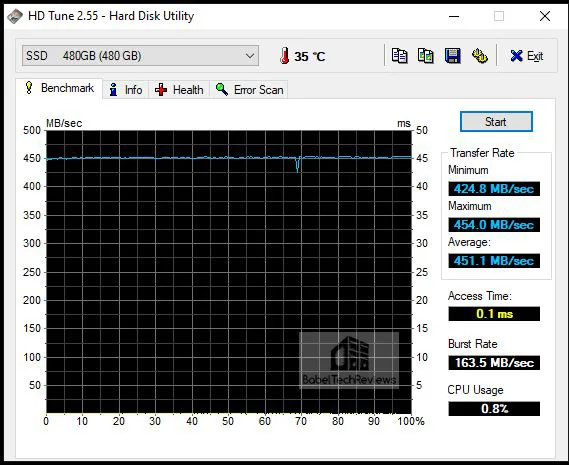
The Kingston A1000 480 GB SSD results are next.
The FireCuda 2 TB SSHD’s results follow.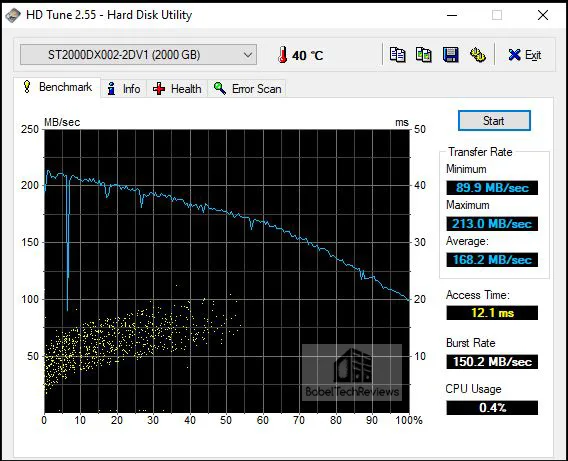
Here are the HD Tune benches summarized in a chart.
The Kingston A1000 PCIe NVMe SSD again leads our tested drives followed by the T-FORCE Vulcan 500GB SSD, the Team Group L5 LTE 480GB SSD and in a distant last is the SSHD.
Next we benchmark using AS SSD.
AS SSD 2.0.6821.41776
AS SSD is especially designed for Solid State Drives (SSD). This tool contains synthetic and practice tests. The synthetic tests determine the sequential and random read and write performance of the SSD without use of the operating system caches. In Seq-test the program measures how long it takes to read and write a 1 GB file.
In the 4K test, read and write performance for random 4K blocks are determined. The 4K-64-thrd test are similar to the 4K procedure except that the read and write operations on 64 threads are distributed as in the usual start of a program. In the copying test, two large ISO file folders are created, programs with many small files, and a games folder with small and large files. These three folders are copied by the OS copy command with the cache turned on. AS SSD gives an overall “score” after it runs the benchmarks.
The T-FORCE Vulcan 500GB SSD scores 1248.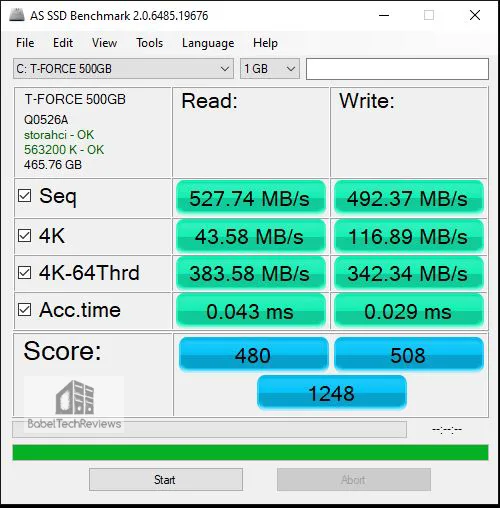
The Team Group 480 GB SSD scores 1182.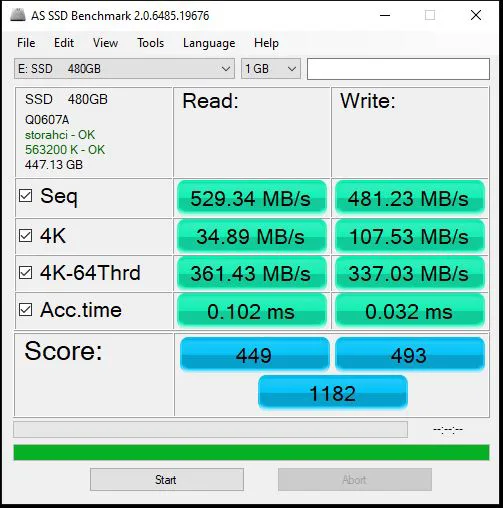
The Kingston A1000 480GB PCIe M2 SSD scores 2489.
The 2TB FireCuda SSHD can only score 49. It’s another test that takes a mechanical drive a very long time to complete.
The SSHD or HDD tests appear to take forever with AS SSD and they score very low compared to any SSD.
ATTO
ATTO is a low level hardware benchmark for random access read/write storage devices including for SSDs and HDDs. HD Tach uses custom device drivers and low level Windows interfaces to determine the physical performance of the device.
Here is the T-FORCE Vulcan 500GB SSD ATTO disk benchmark.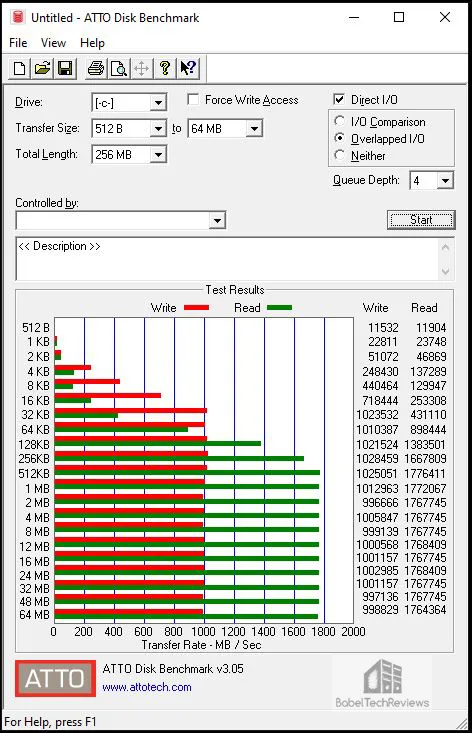
Here are the Team Group 480GB L5 SSD‘s ATTO disk benchmark.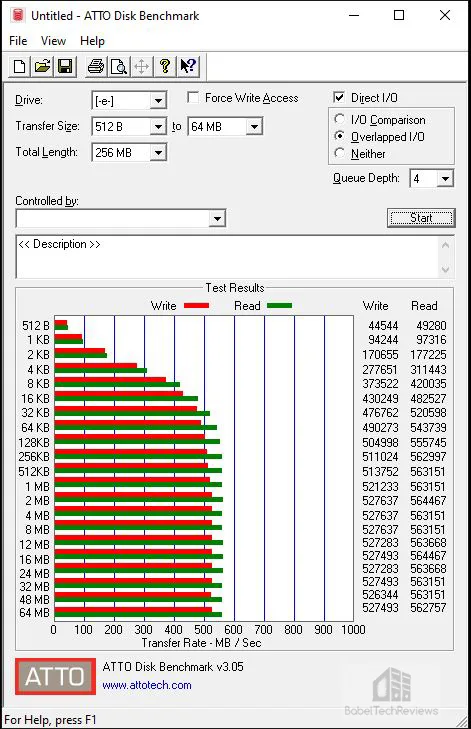
The Kingston A1000 480 GB SSD ATTO Disk benchmark results are next.
The FireCuda 2 TB SSHD’s ATTO benchmark results are last.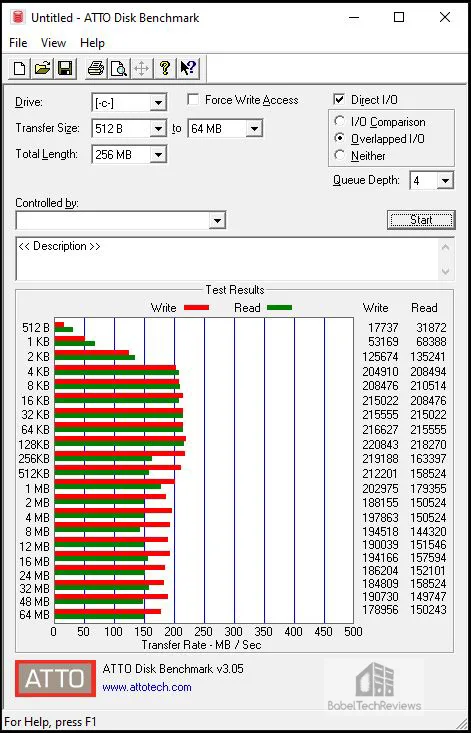
HD Tach again shows the Kingston A1000 NVMe SSD ahead of the other SATA III SSDs to say nothing of the SSHD which trails in every test. The T-FORCE Vulcan 500GB SSD is second.
HD Tach
HD Tach is a low level hardware benchmark for random access read/write storage devices including for SSDs and HDDs. HD Tach uses custom device drivers and low level Windows interfaces to determine the physical performance of the device. It is no longer supported and needs to be run in compatibility mode for Windows 7.
Here is the T-FORCE Vulcan 500GB SSD HDTach results.
Here are the Team Group 480GB L5 SSD‘s HDTach results.
The Kingston A1000 480 GB SSD HDTach results follow.
The FireCuda 2 TB SSHD’s HDTach results are last.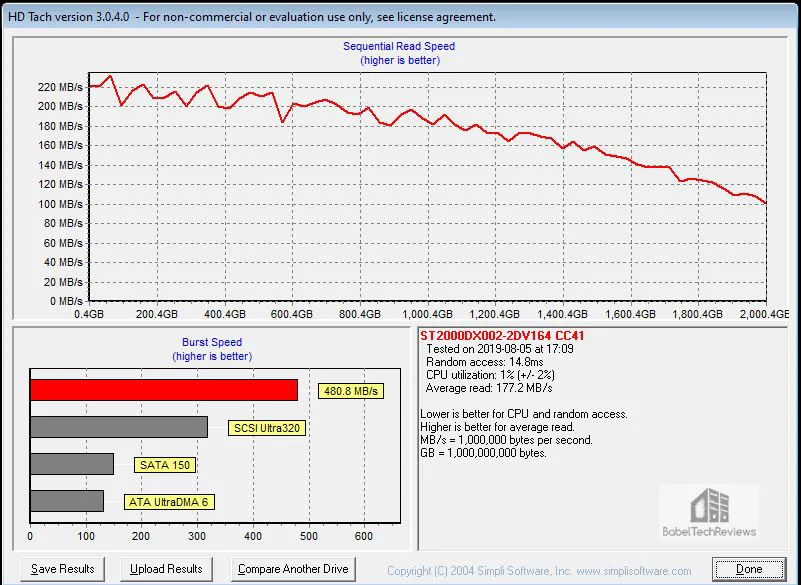
Here are the HD Tach Disk benches summarized in a chart.
As usual, the Kingston A1000 NVMe SSD is ahead of the other SATA III SSDs to say nothing of the SSHD which trails in every test. The T-FORCE Vulcan 500GB SSD is faster than the Team Group L5 LTE 480GB SSD.
Enough of the synthetics! Let’s look at game and game level loading times.
The Game/Level Loading Time Results
Unfortunately, our results are very difficult to measure precisely but it is easy to see that generally SSDs perform similarly with regard to game loading times and they are miles ahead of any HDD. Even SSHDs require loading the same level or program over and over to get quicker.
Here are our game loading times – first in bold – followed by a level’s first load time in italics. After, we load and time each game, and then load and time each level multiple times, and record our average subsequent loading times in seconds. Lower (faster) is better.
The NVMe Kingston A1000 PCIe SSD is a bit faster than the other two SATA-based drives, but it is significantly faster than launching the game from a SSHD for the first time. Playing Kingdom Come: Deliverance is what made us originally switch to an all-SSD PC which saves us a lot of time over loading and benching from a SSHD. A SSHD only starts to show it’s strengths when the same game or level is reloaded multiple times in succession.
Until developers start to target SSDs for game storage, or perhaps after consoles move away from hard disk drives, we will finally no longer see SSDs held back from achieving the game loading performance they are capable of. NVMe PCIe M.2 SSDs are a bit faster than SATA-based SSDs, but the question remains as to them being worth their price premium for gamers today.
Here are the rest of our Summary Charts in one place for easy reference.
Non-Gaming Summary Charts
 The Kingston A1000 480GB PCIe M.2 SSD is the fastest overall SSD that we tested today. But at $76.30, is it worth the price premium over the $59.99 T-FORCE Vulcan 500GB SSD for a gamer?
The Kingston A1000 480GB PCIe M.2 SSD is the fastest overall SSD that we tested today. But at $76.30, is it worth the price premium over the $59.99 T-FORCE Vulcan 500GB SSD for a gamer? 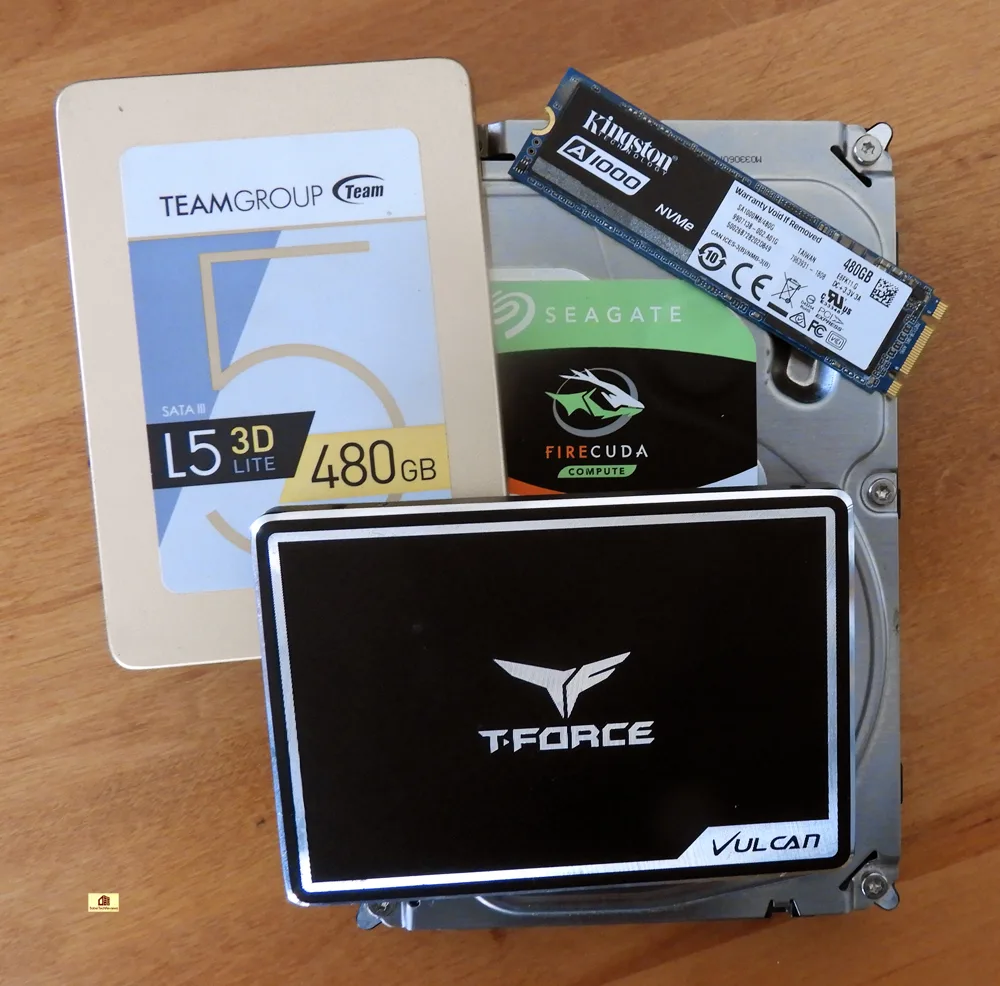 Each gamer will have to make a personal decision. Those who desire having the fastest PCs, will want a PCIe NVMe SSD for gaming. But at the very least, we would recommend moving from a HDD or a SSHD to a SATA SSD which will make loading and reloading games much less painful. In this case, the T-FORCE Vulcan 500GB SSD is a good choice.
Each gamer will have to make a personal decision. Those who desire having the fastest PCs, will want a PCIe NVMe SSD for gaming. But at the very least, we would recommend moving from a HDD or a SSHD to a SATA SSD which will make loading and reloading games much less painful. In this case, the T-FORCE Vulcan 500GB SSD is a good choice.
Let’s head for our conclusion.
The Conclusion & Verdict
SSD technology is still improving and again it seems that pricing for SATA 500GB drives are still dropping overall. SSD technology has become much more accessible to the regular consumer, and it appears that gamers need much more capacity than 120GB to 250GB drives as games are getting very large.
If a gamer wants to keep his games on a SSD, it appears that 500GB has become the new minimum size. The Vulcan 500GB SSD is sufficient for most gamers, especially if coupled with a storage drive – either another SSD or a SSHD.
It is not mandatory to have a SSD if you use your PC only for gaming. Games do not perform better on a SSD as developers still target the HDD for optimizing game performance. But there is the matter of waiting. Some games take significantly longer to load from a HDD or SSHD than they do from a SSD. If a gamer wants to get right back into the game, then a SSD will definitely improve immersion and decrease frustration as it did for us with Kingdom Come: Deliverance and even with Grand Theft Auto V.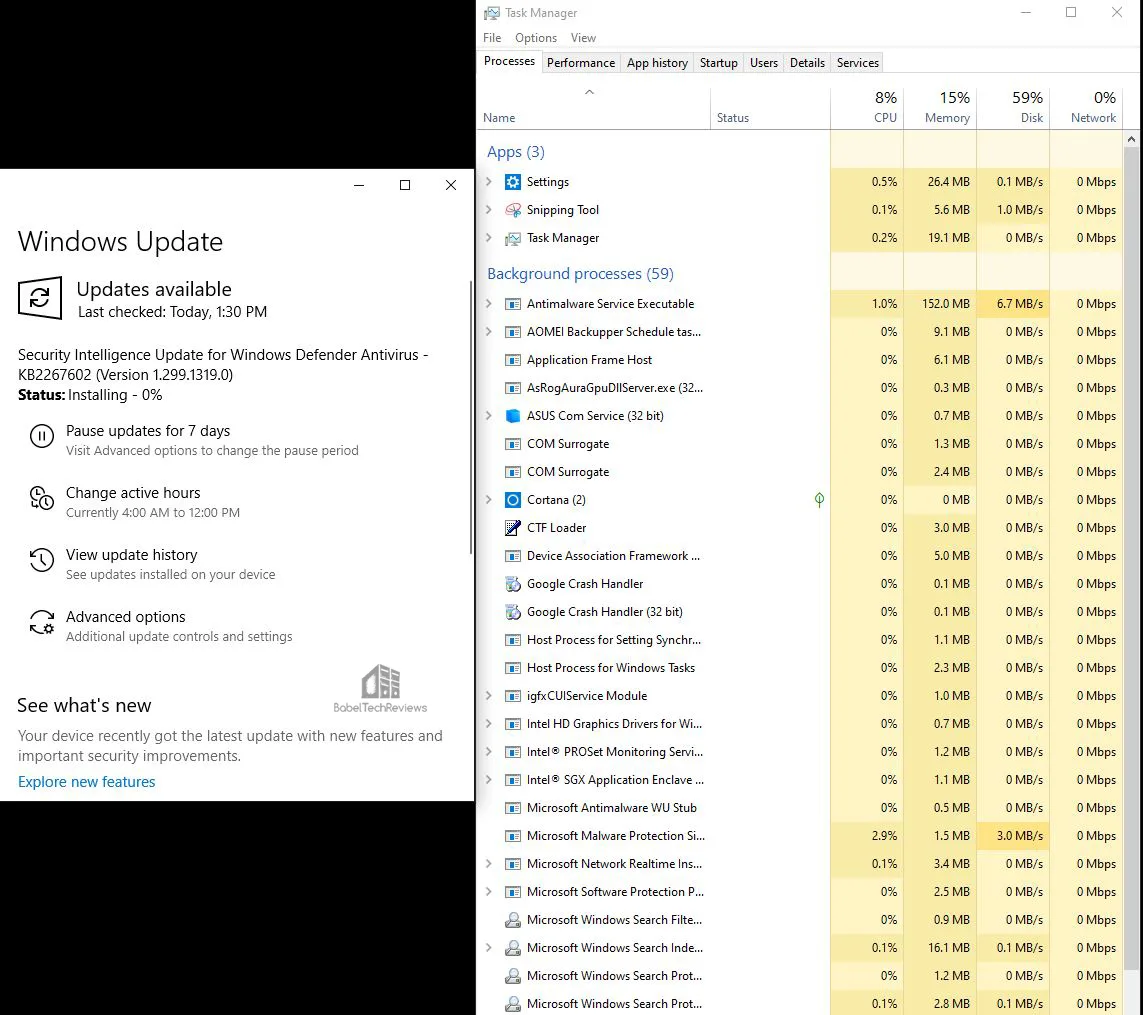
It is a matter of valuing ones time since using a HDD or SSHD on Windows 10 is becoming more and more painful. Indexing, Search, or Antimalware automatic programs will often completely saturate the bandwidth of a mechanical drive, and even downloading or updating Steam games may slow your entire PC to an irritating crawl.
Pros
- The Vulcan 500GB SSD is of a magnitude faster than any mechanical hard drive or SSHD in almost every way.
- At 7nm, the Vulcan SSD is thin and light and fits easily in most notebooks and desktops for a simple drop-in upgrade
- 3-year warranty backed by Team Group support.
- The Vulcan 500GB SSD is faster than the Team Group L5 LTE 480GB SSD and only slightly slower for loading games than the significantly more expensive Kingston NVMe M2 SSD.
Cons
- None.
This has been quite an enjoyable exploration comparing our other three drives with the T-FORCE Vulcan 500GB SSD. The performance of this drive is very good as a stand-alone SATA-based SSD.
The Verdict
 We are giving the $59 T-FORCE Vulcan 500GB BTR’s “Recommended” Award as it is significantly faster than any HDD or SSHD, and it is faster overall than the slightly cheaper ($58) Team Group L5 3D 480GB SSD. For gamers, the T-FORCE Vulcan 500GB SSD competes reasonably well with an entry-level ($76) Kingston M2 A1000 NVMe drive in that game loading times are only a few seconds slower. However, we found it actually painful to use a SSHD again, and would recommend using a ($89) 2TB FireCuda SSHD only for storage.
We are giving the $59 T-FORCE Vulcan 500GB BTR’s “Recommended” Award as it is significantly faster than any HDD or SSHD, and it is faster overall than the slightly cheaper ($58) Team Group L5 3D 480GB SSD. For gamers, the T-FORCE Vulcan 500GB SSD competes reasonably well with an entry-level ($76) Kingston M2 A1000 NVMe drive in that game loading times are only a few seconds slower. However, we found it actually painful to use a SSHD again, and would recommend using a ($89) 2TB FireCuda SSHD only for storage.
SSD pricing changes daily, and these drives have actually increased by about $5 each in price since the beginning of this week. Since none of these drives that we compared are on sale, we always recommend checking for sales to get the best bang for buck. The T-FORCE Vulcan 500GB SSD is an excellent choice for a SATA-based SSD and it comes with a 3-year warranty backed by Team Group.
We would normally replace our Team Group L5 3D LTE 480GB SSD with the T-FORCE Vulcan 500GB, but we require an identical pair of SSDs – one for AMD and one for NVIDIA. Instead, we have retired our 2TB SSHD and now have 5TB total in all-SSD storage. We have added 4 new games to BTR’s benching suite, and already they take up half of the capacity of the Vulcan 500GB drive. Gamers should consider that 500GB is really the minimum size for a Windows 10 boot drive.
Next up, our RX 5700 XT Anniversary Edition has returned from RMA, an aftermarket RX 5700 is on the way, and we are long overdue for a performance review versus NVIDIA’s SUPER cards. You can also expect a round-up VR performance evaluation shortly using both the Oculus Rift and the HTC Vive Pro comparing AMD and NVIDIA’s top cards.
Happy Gaming!
